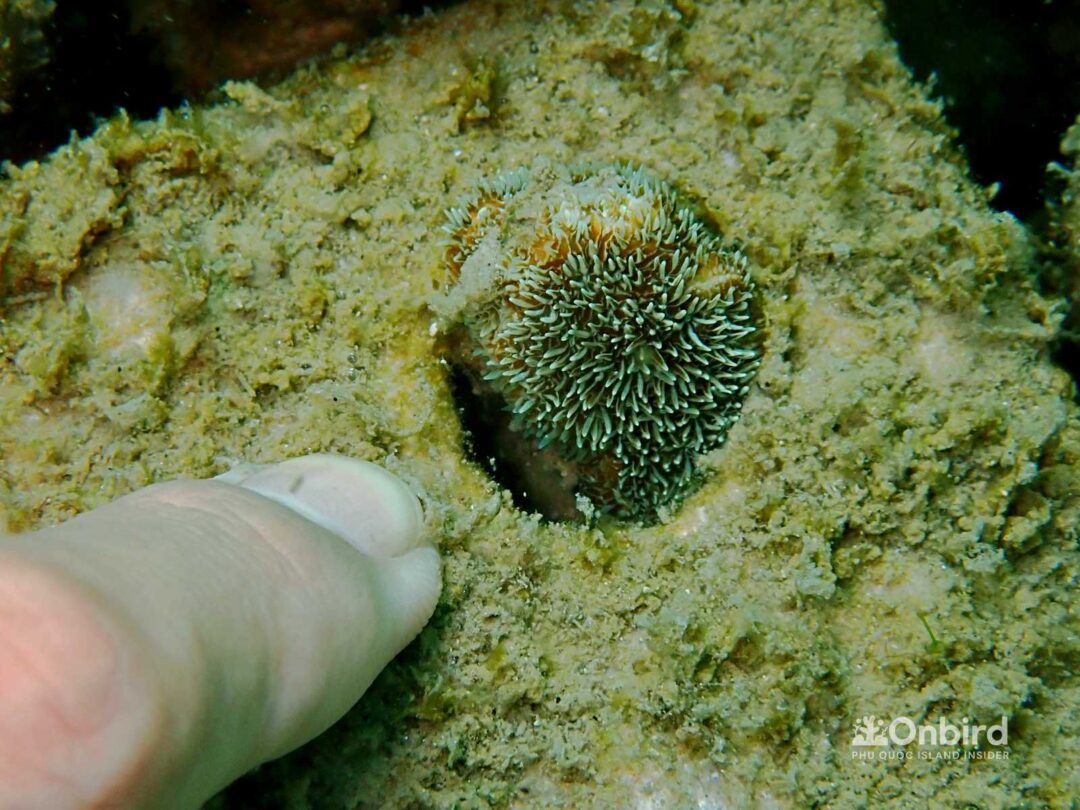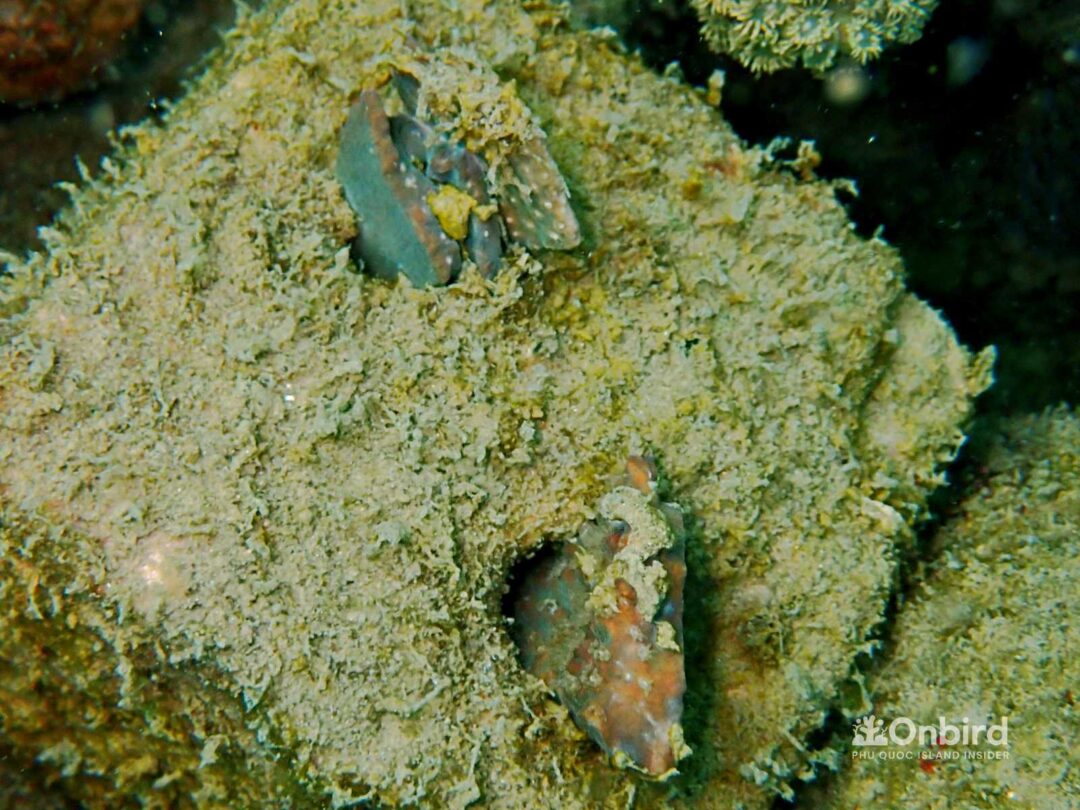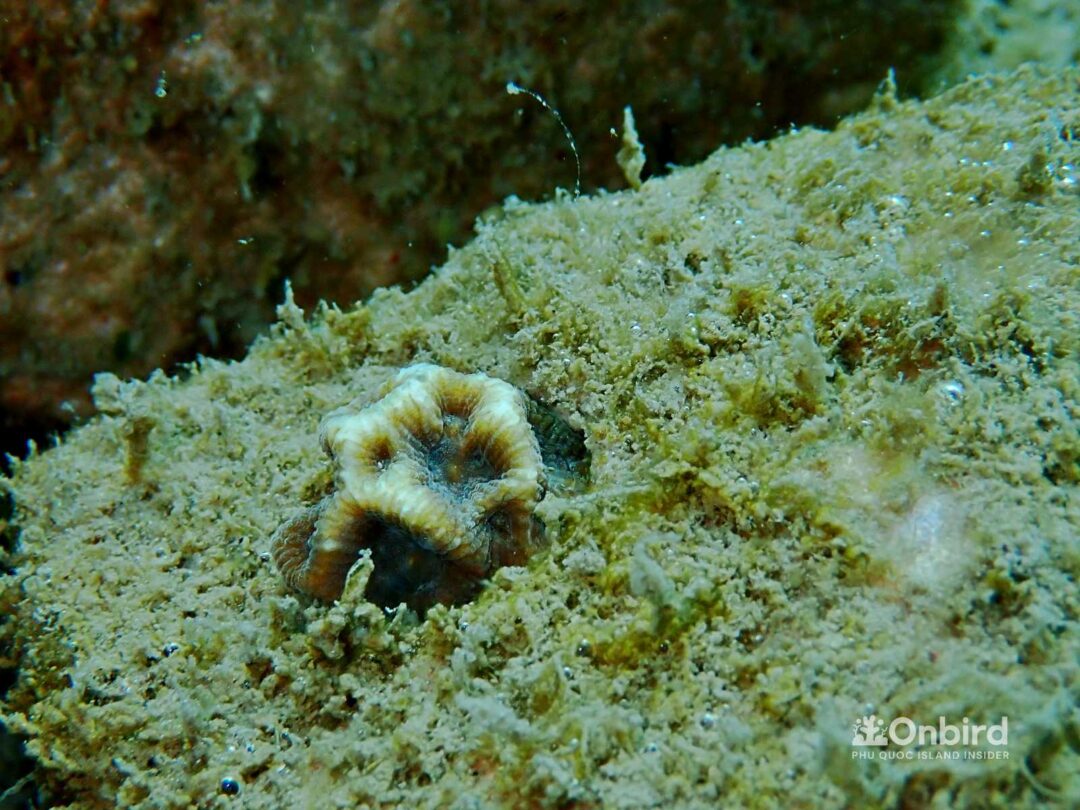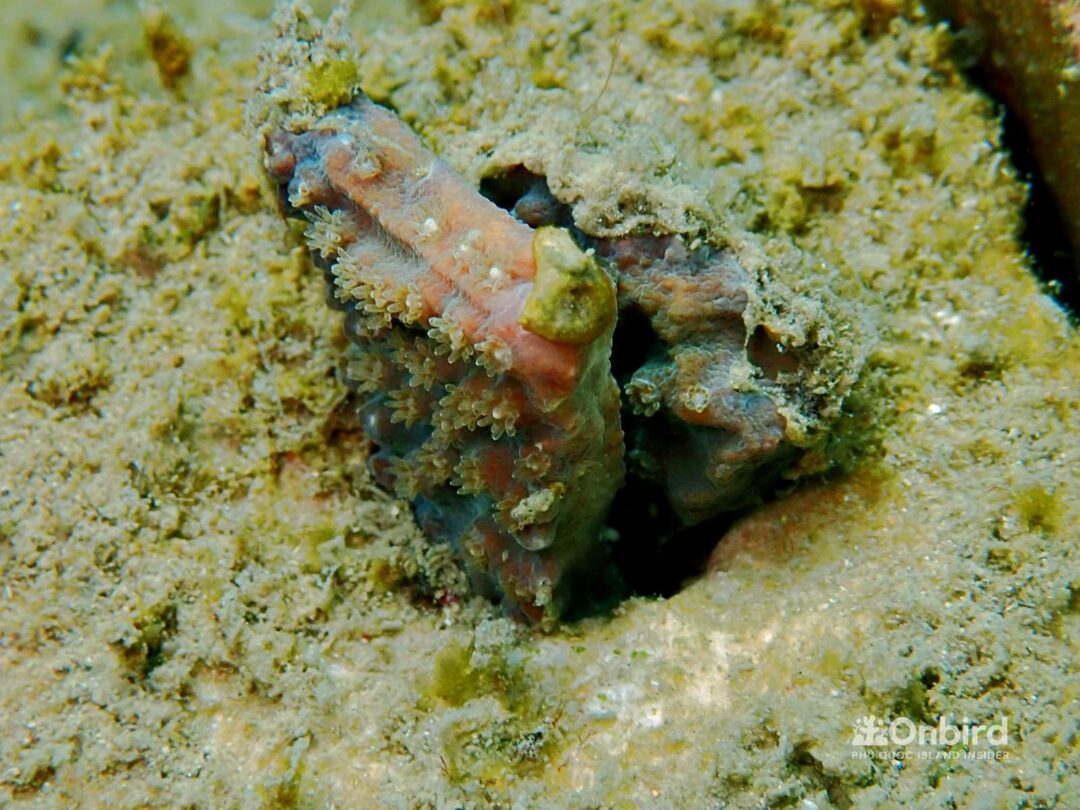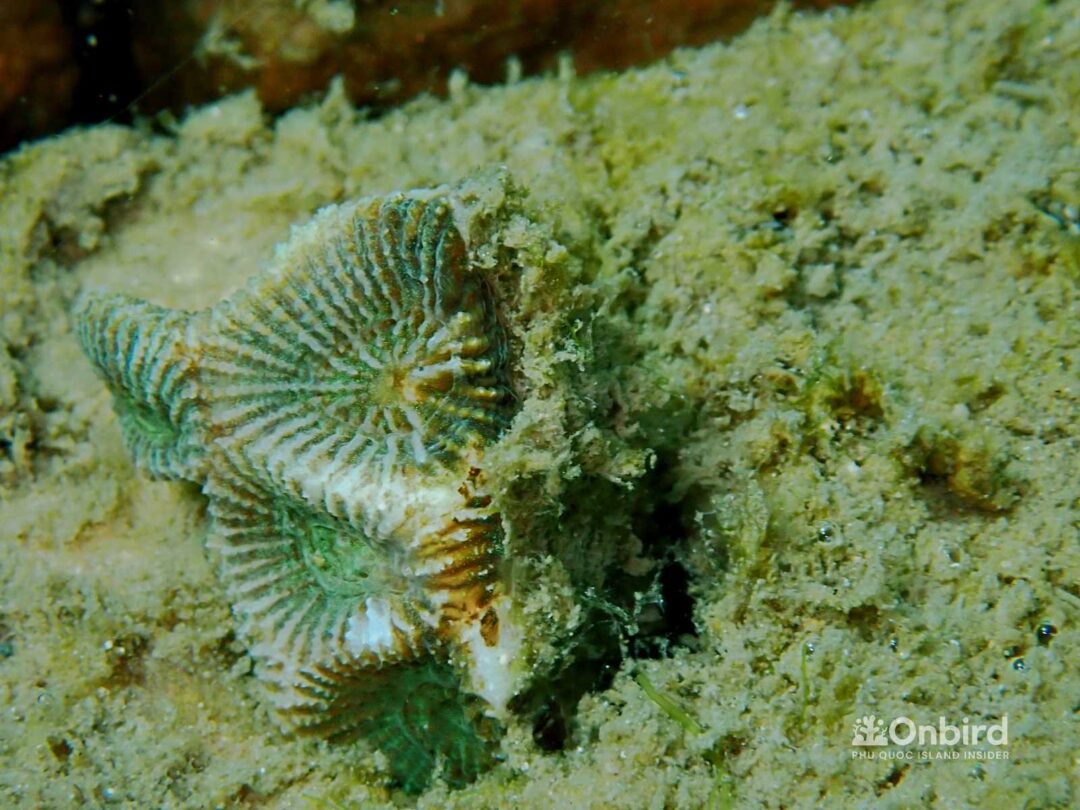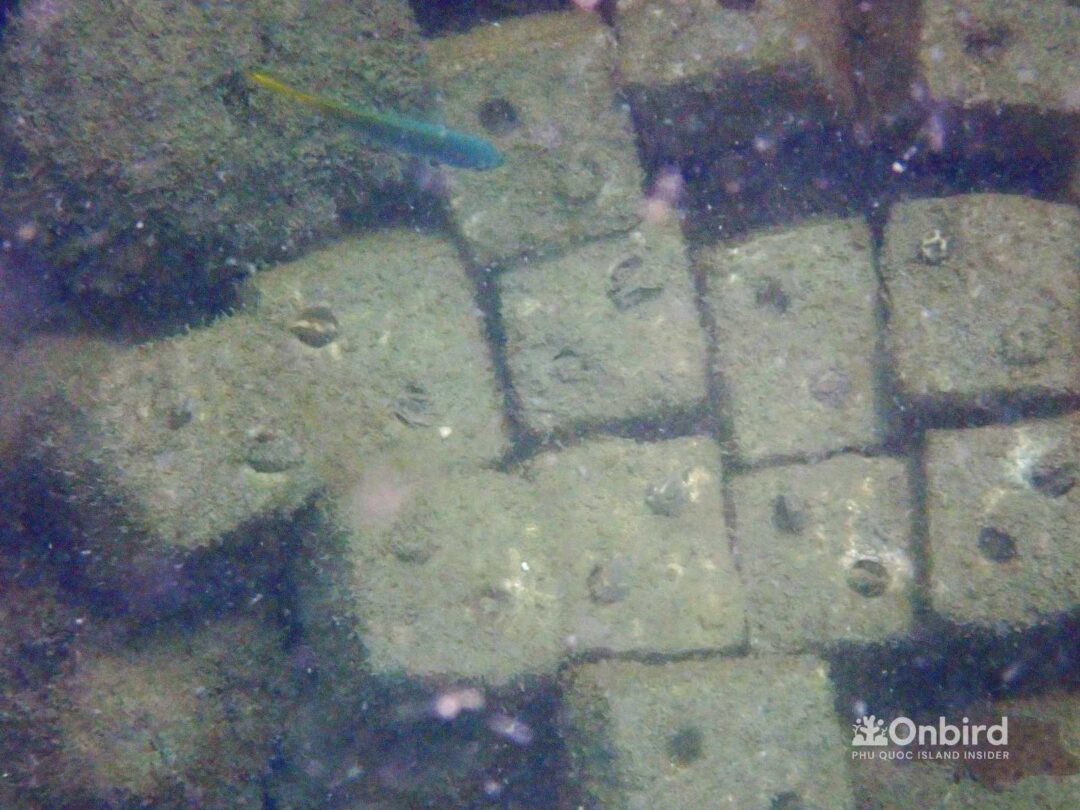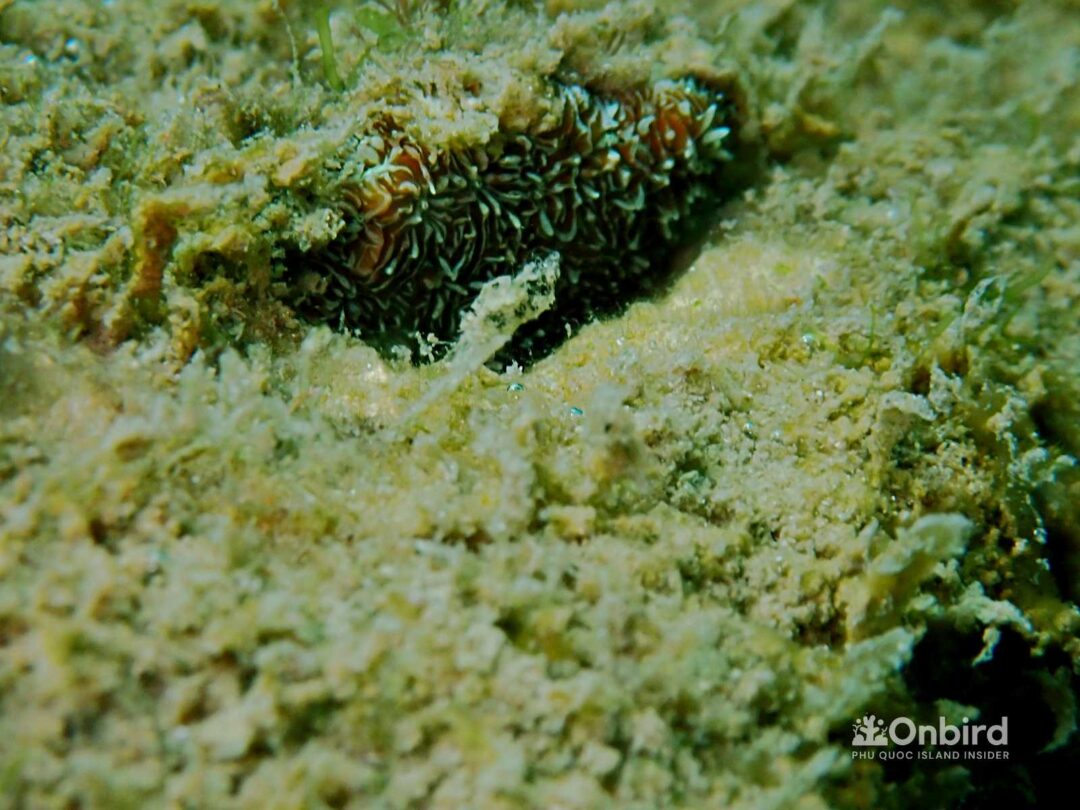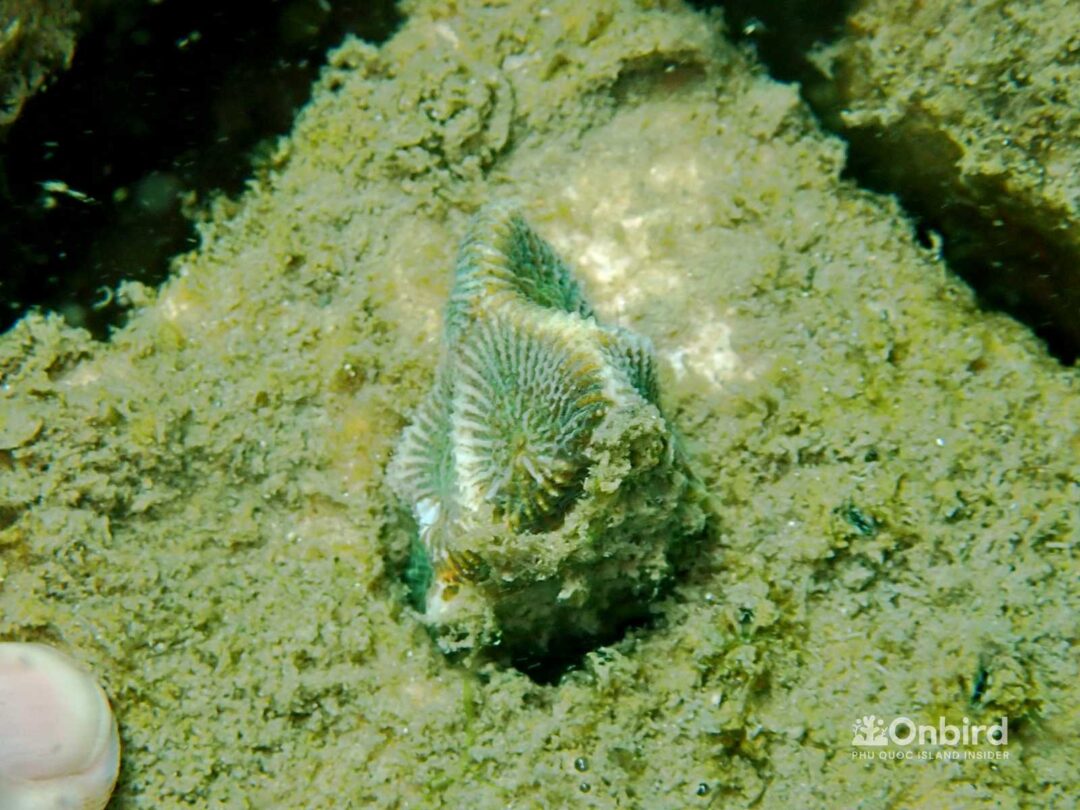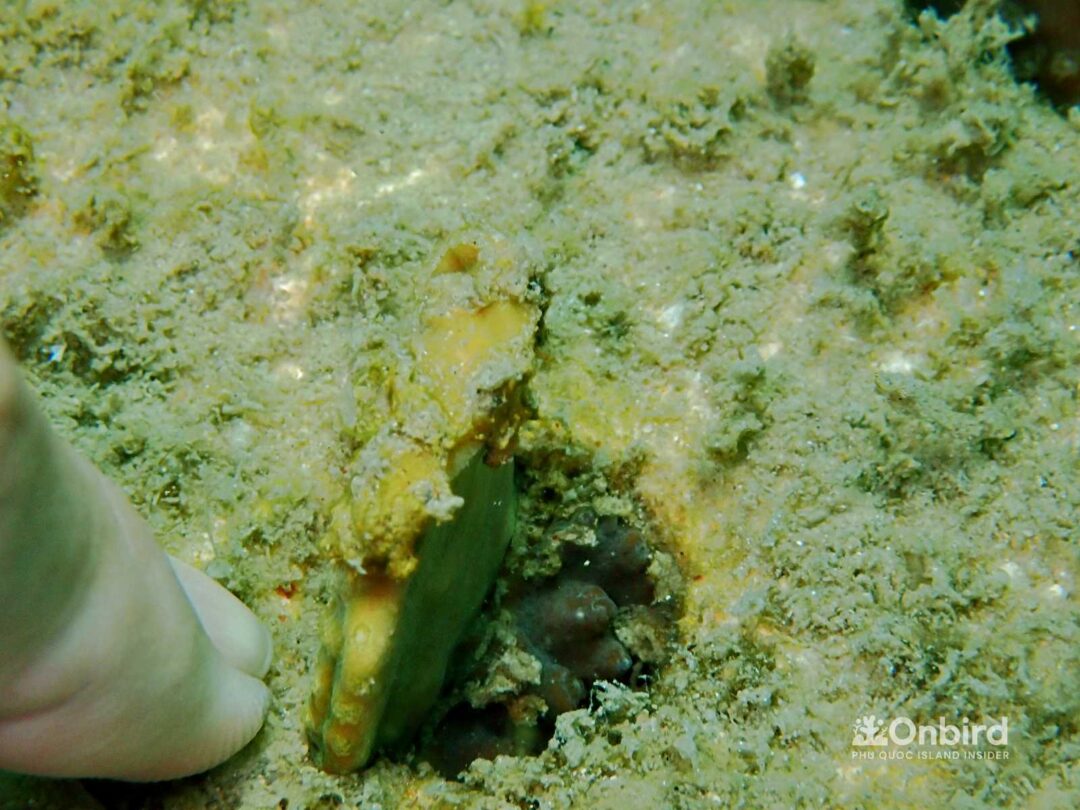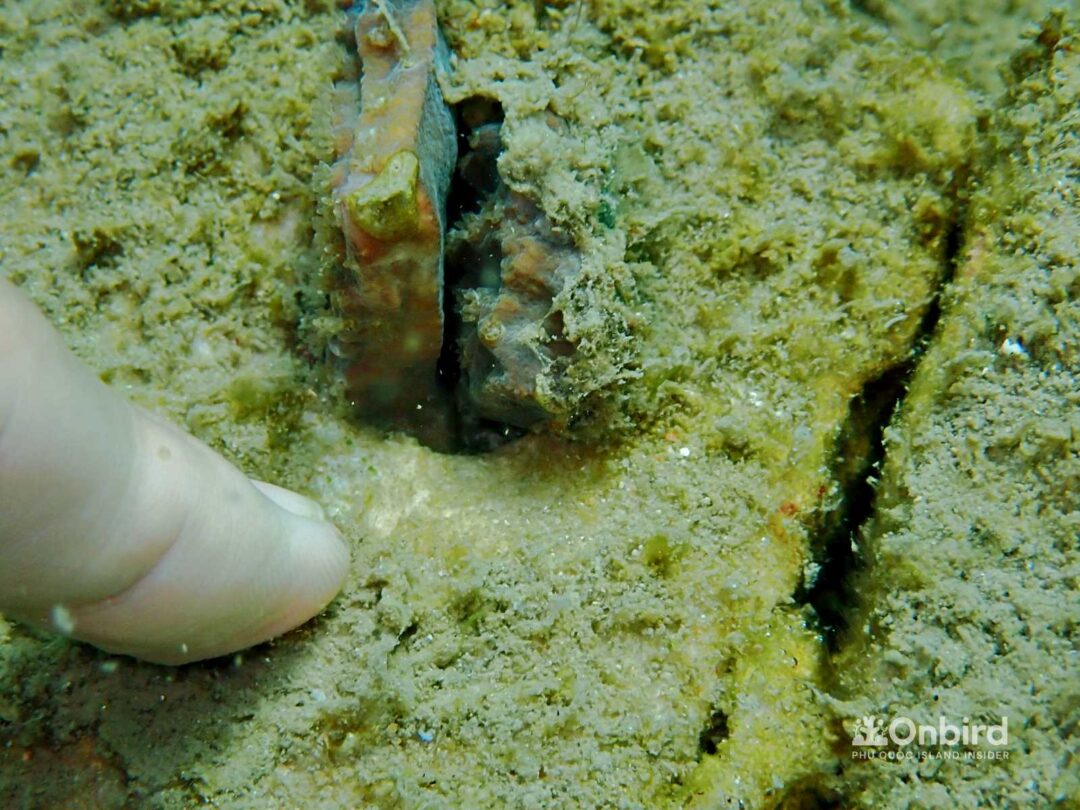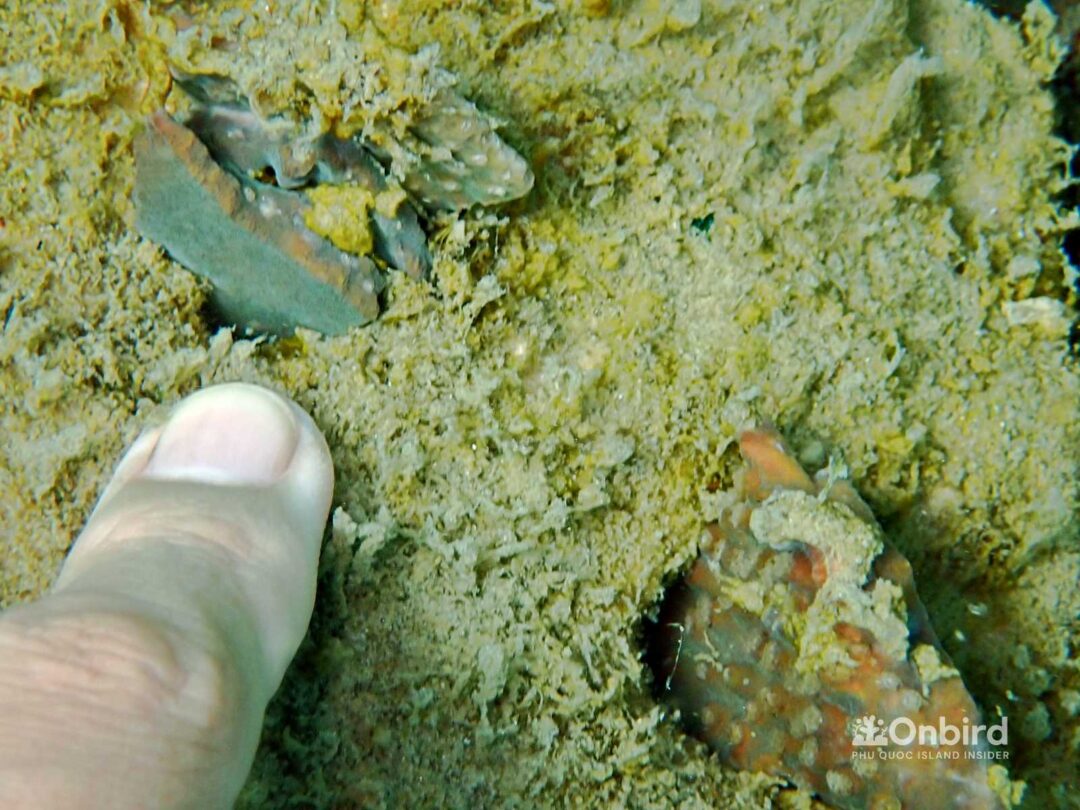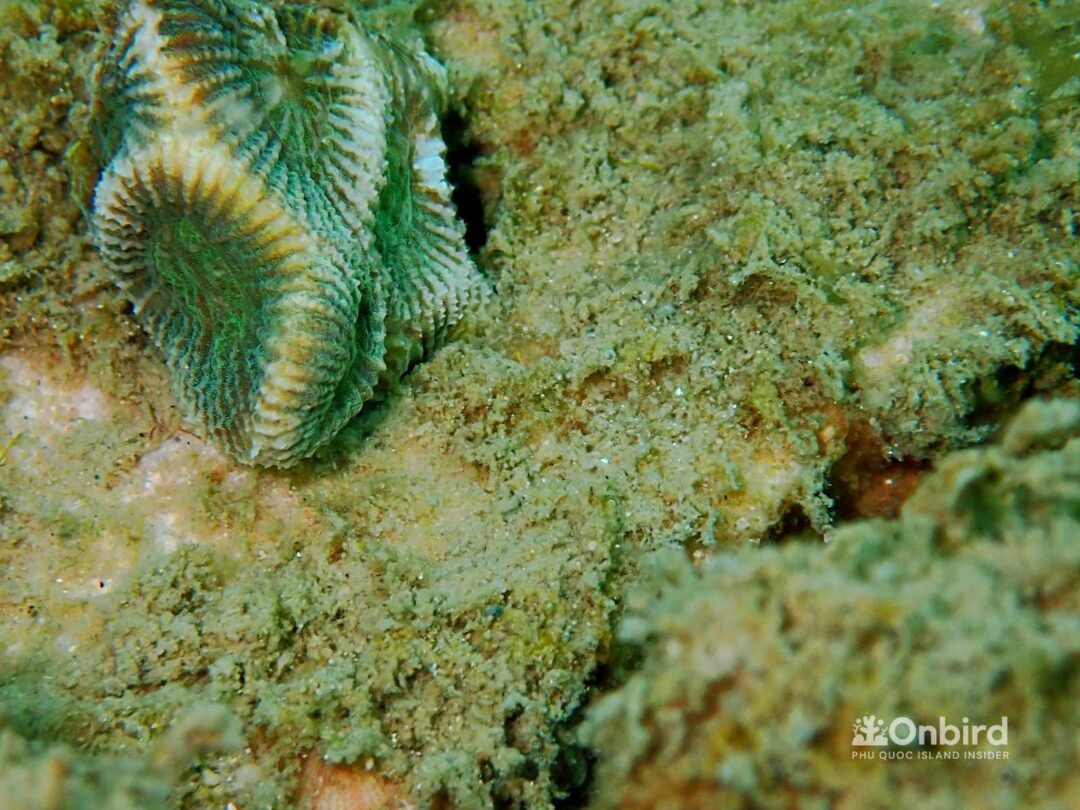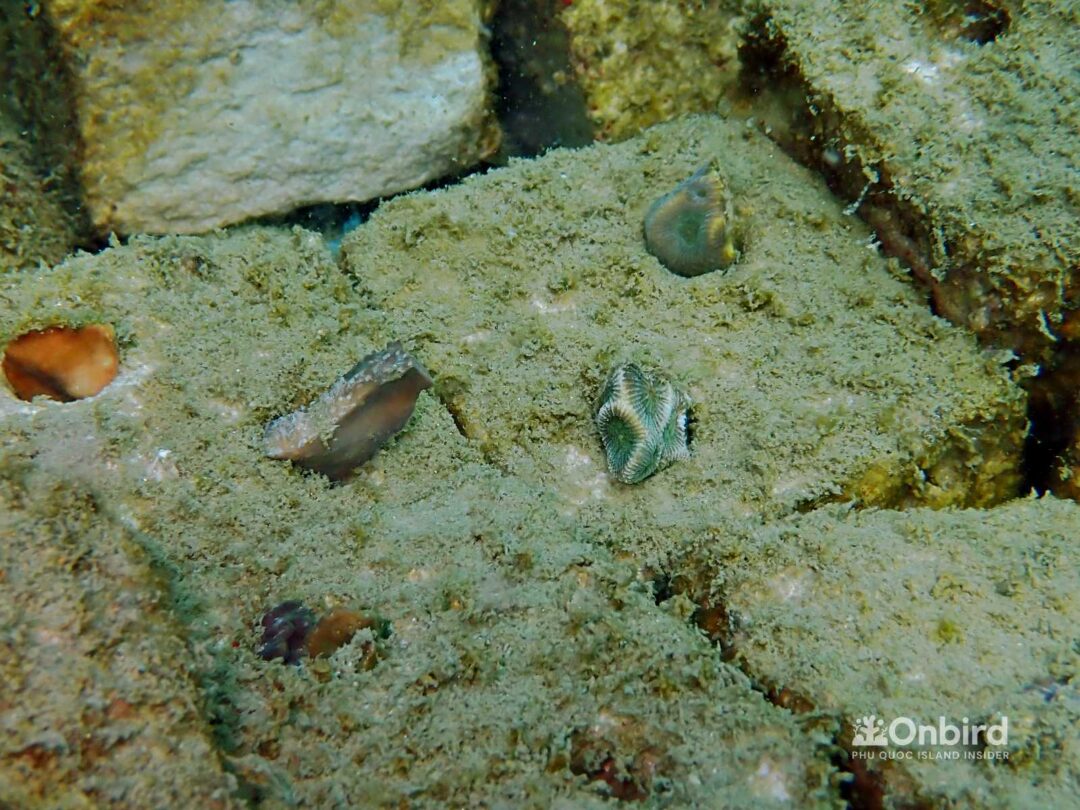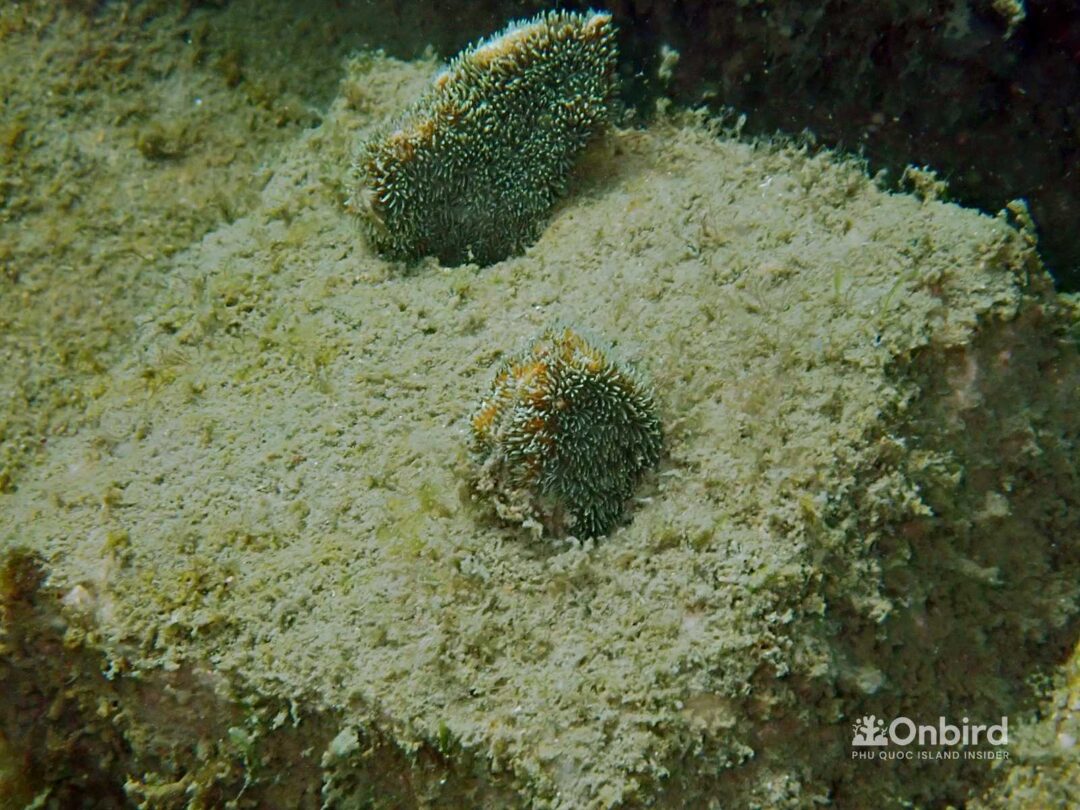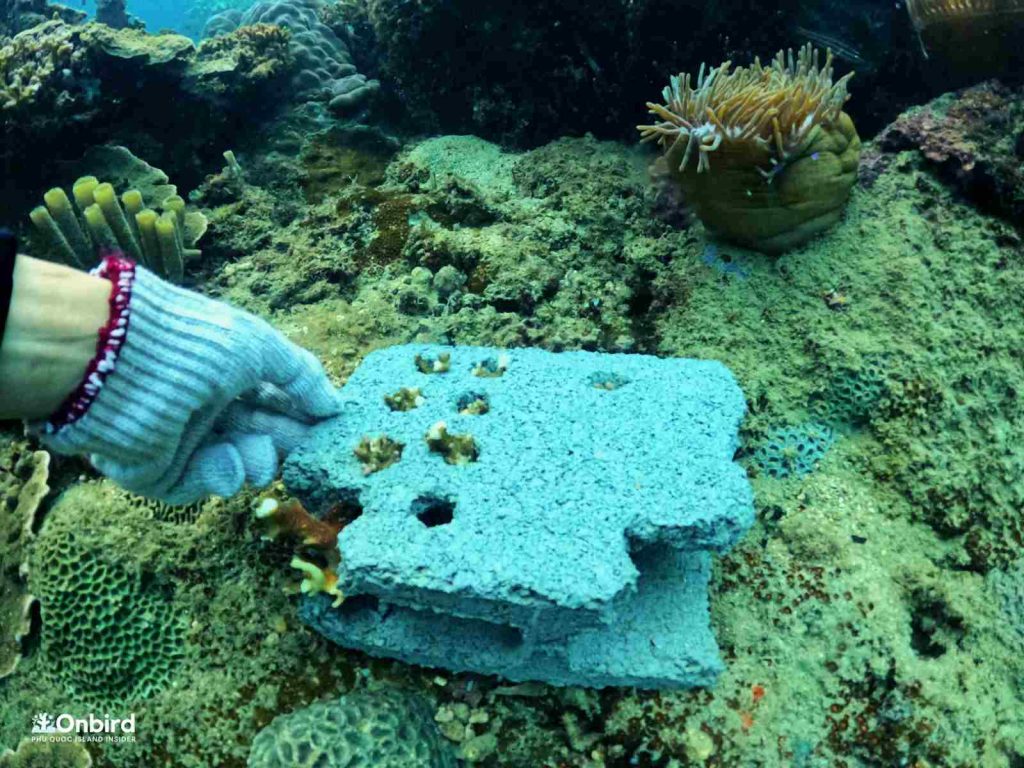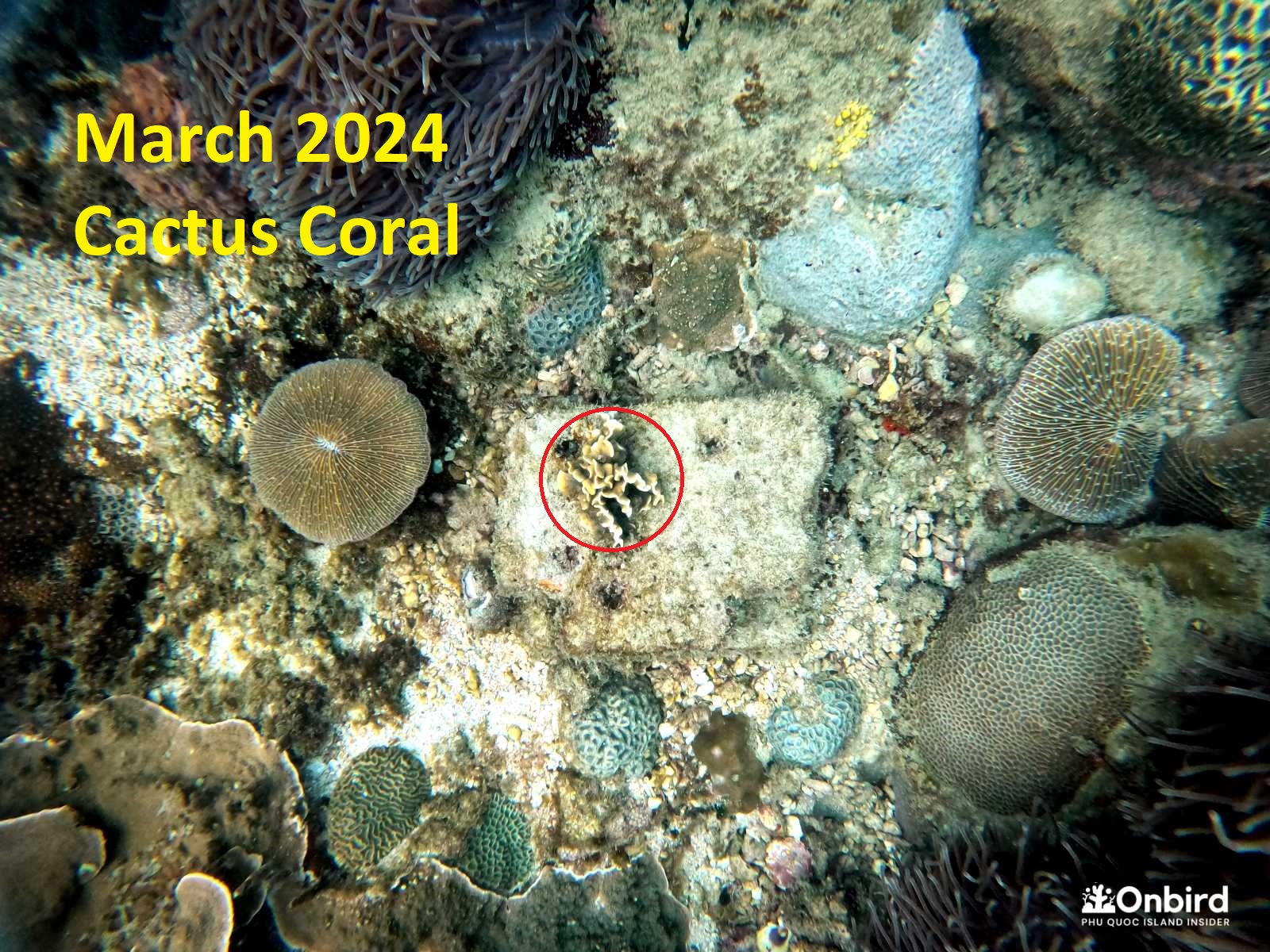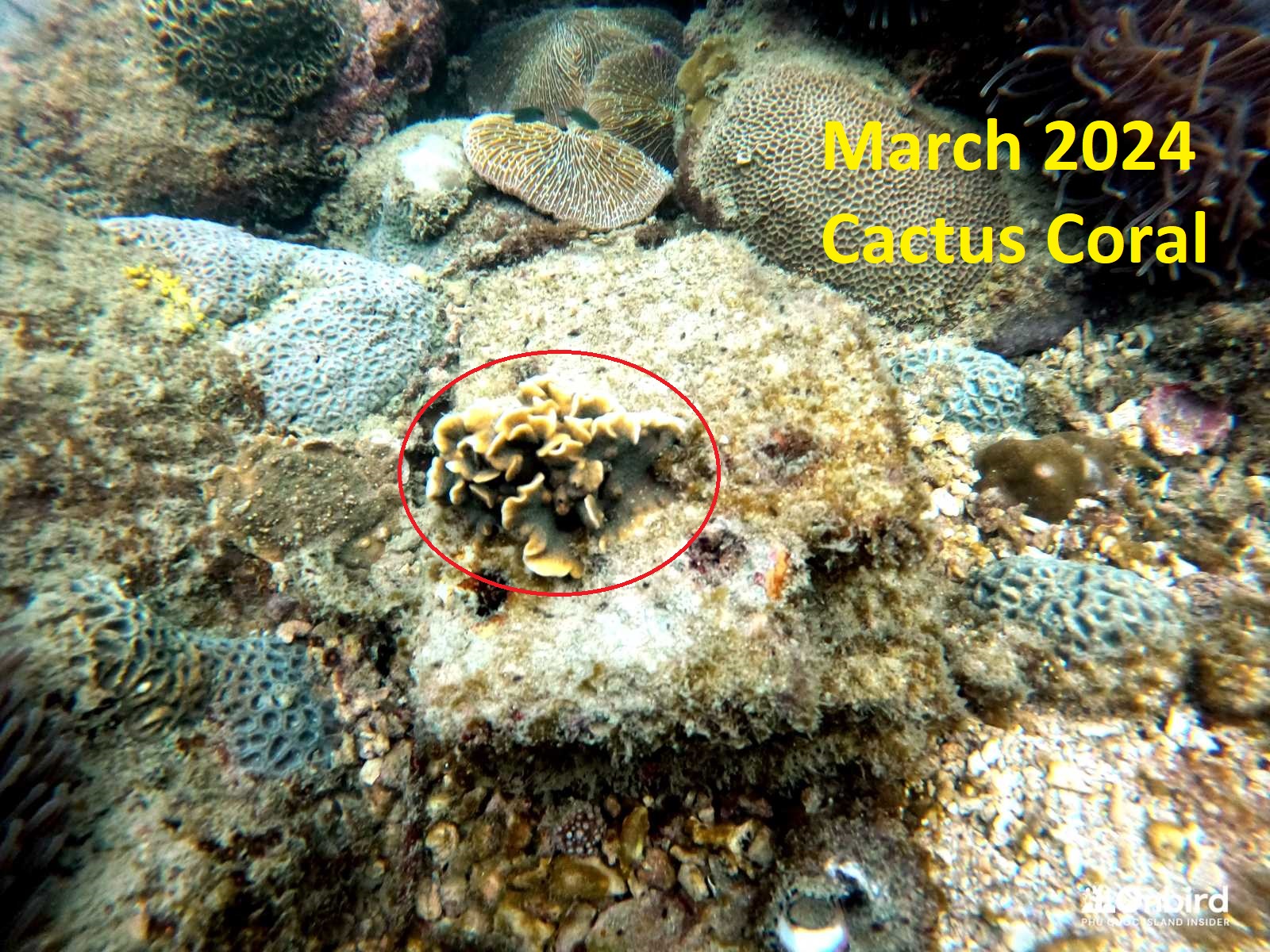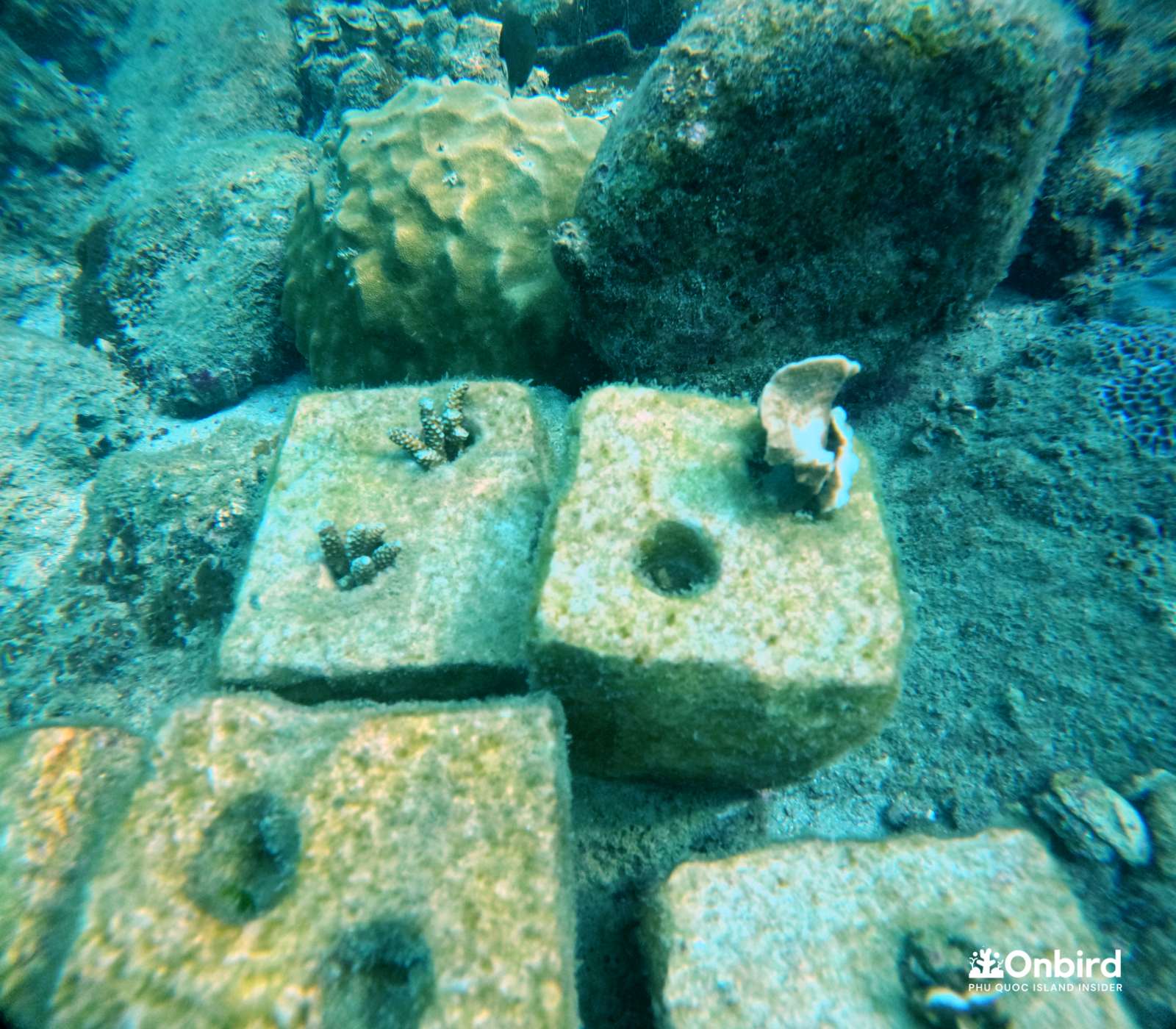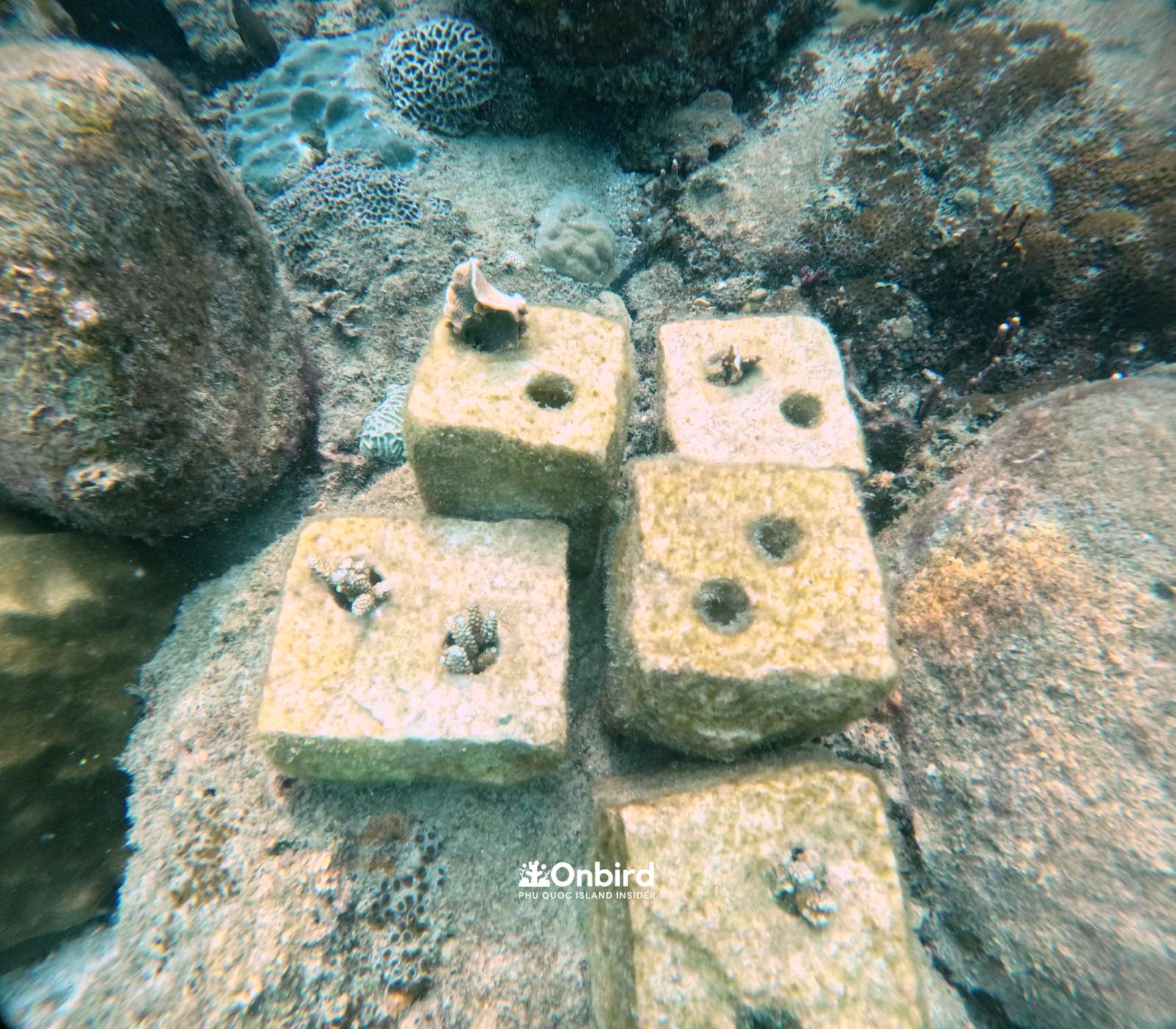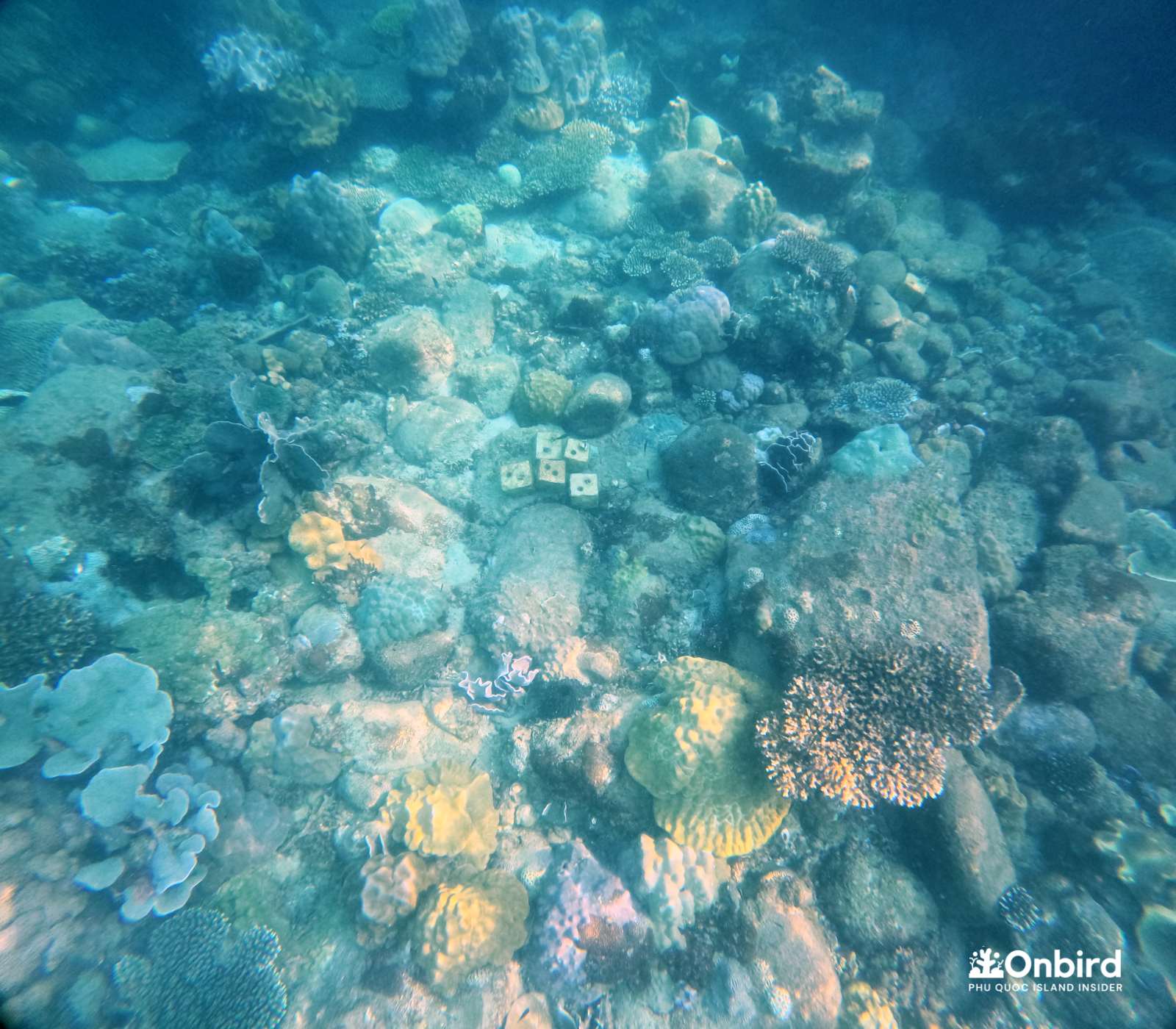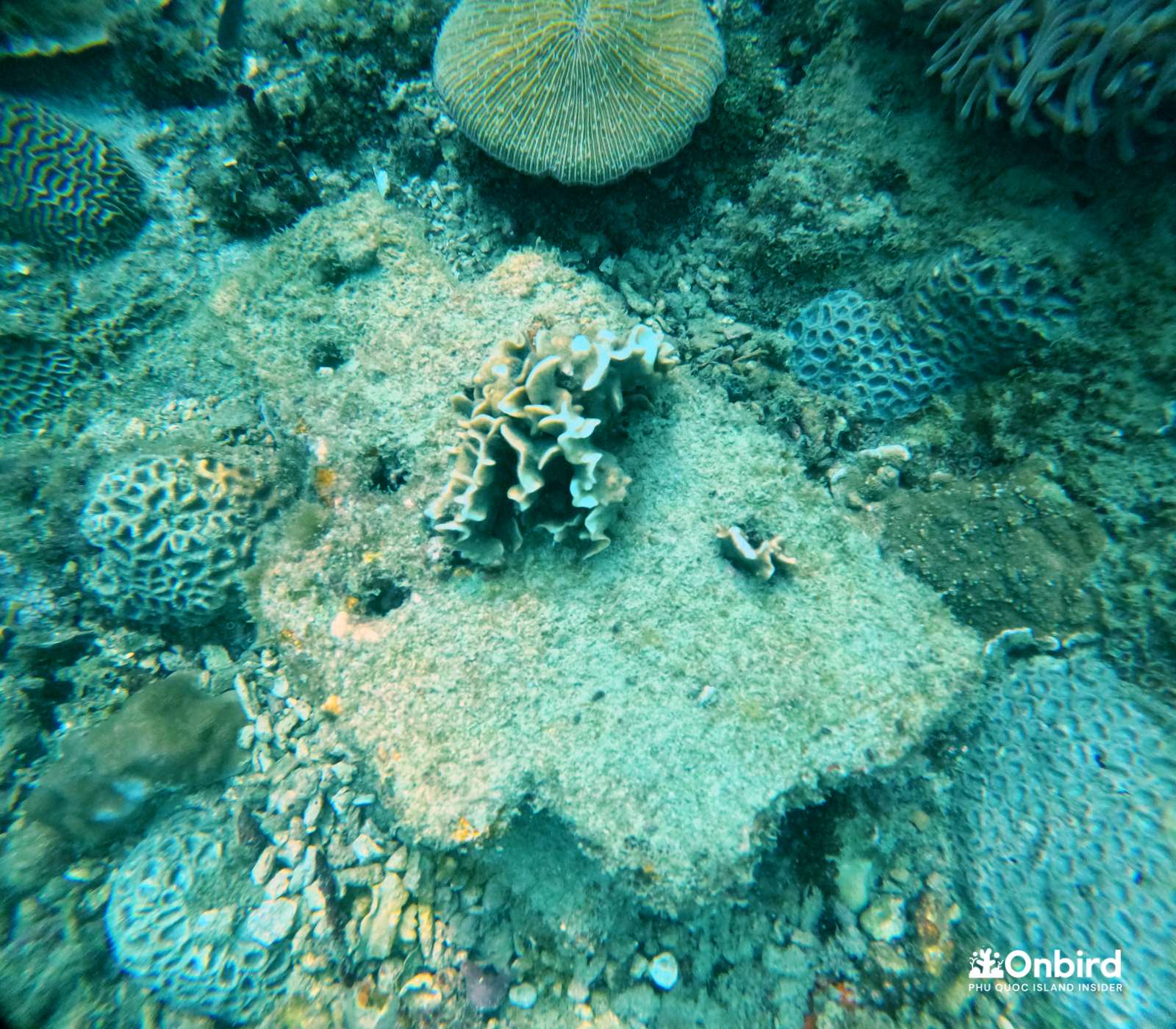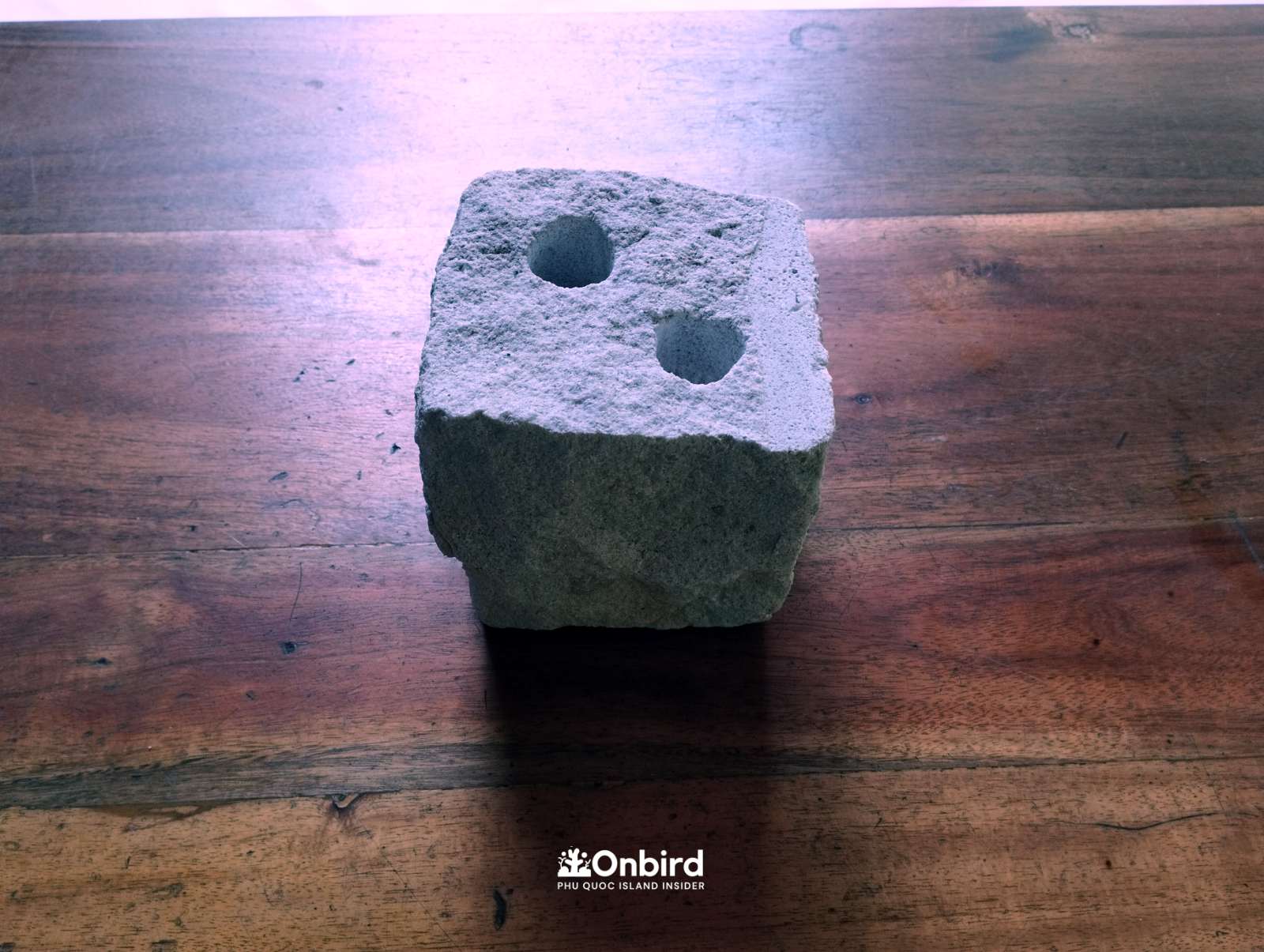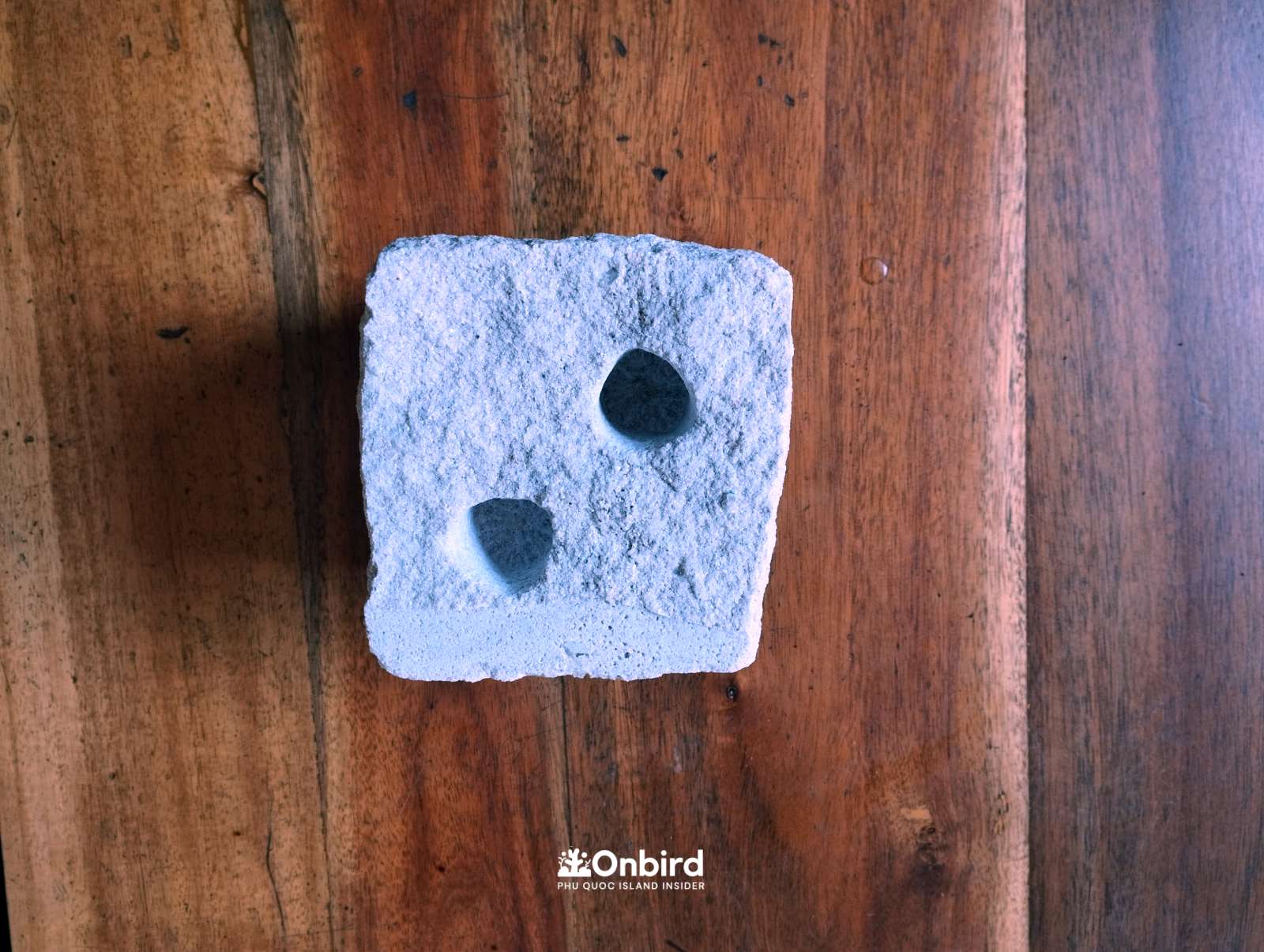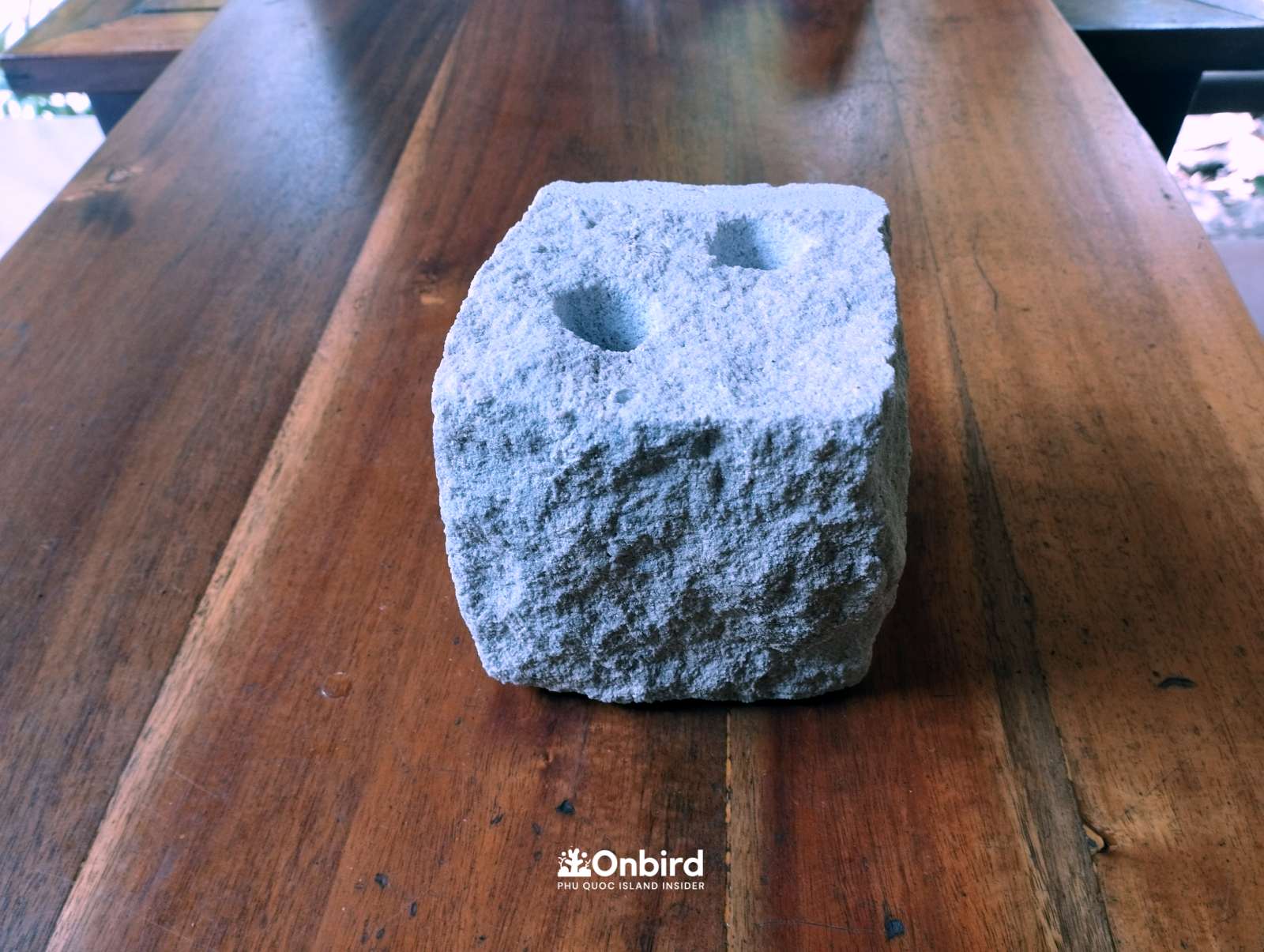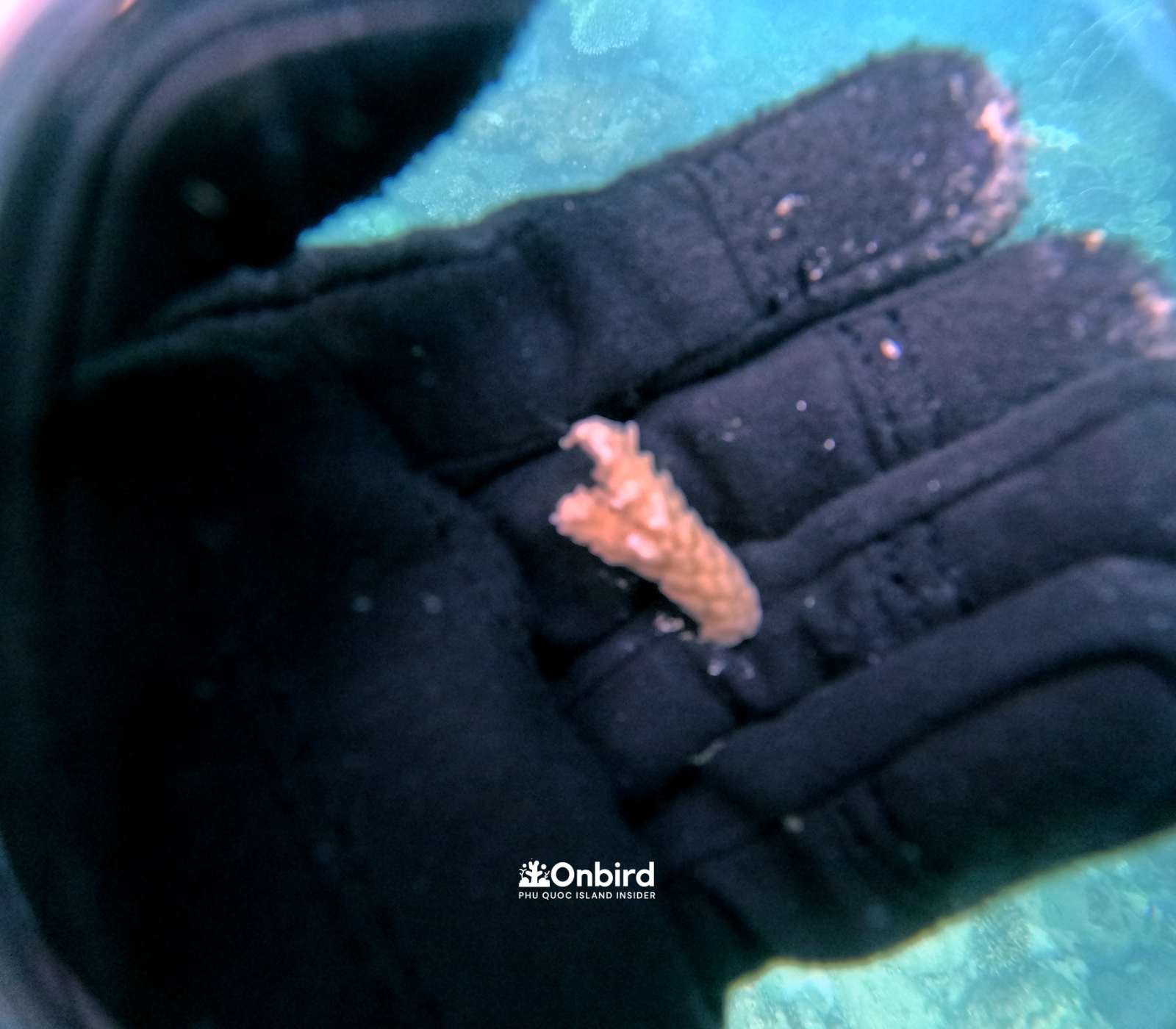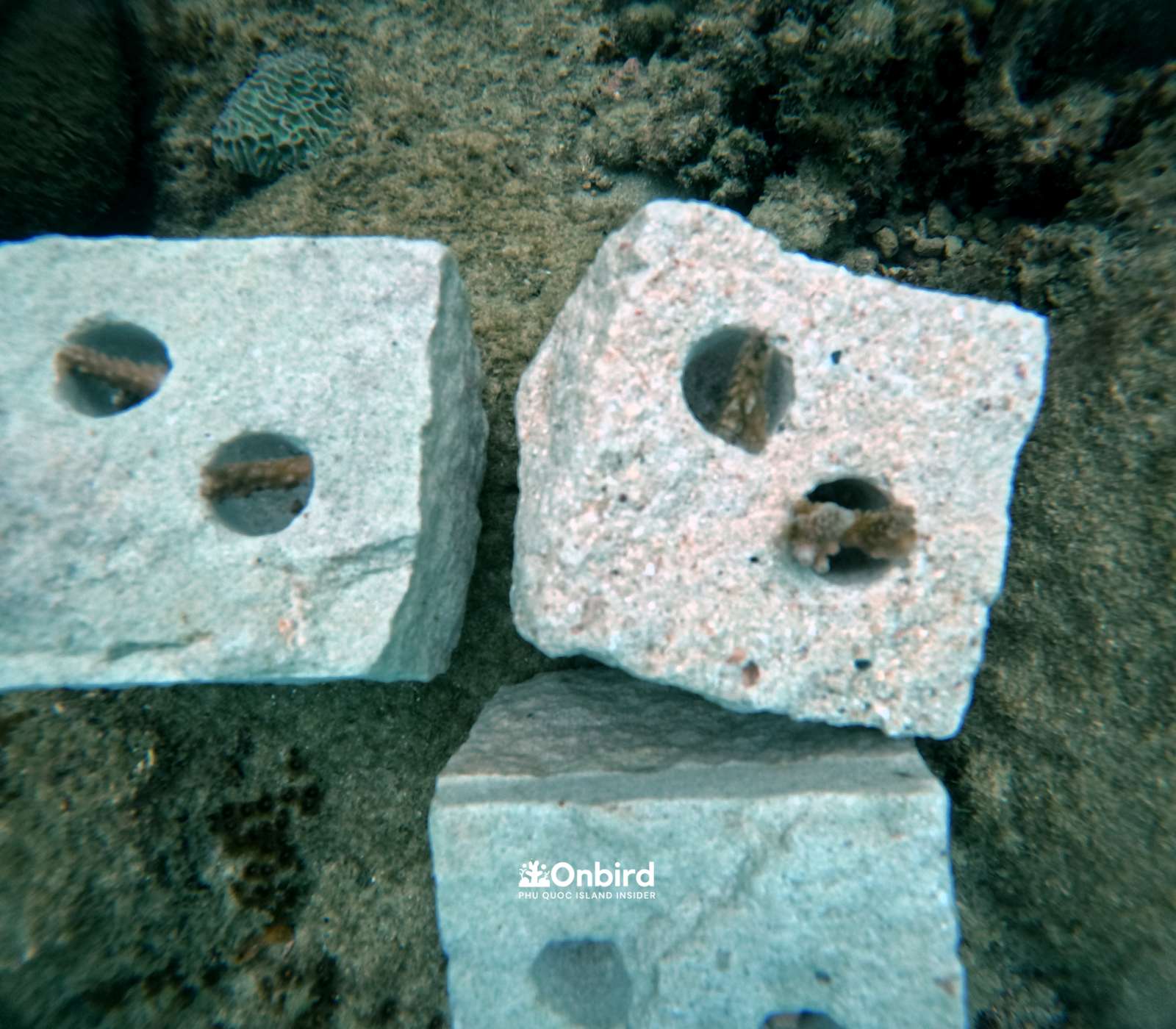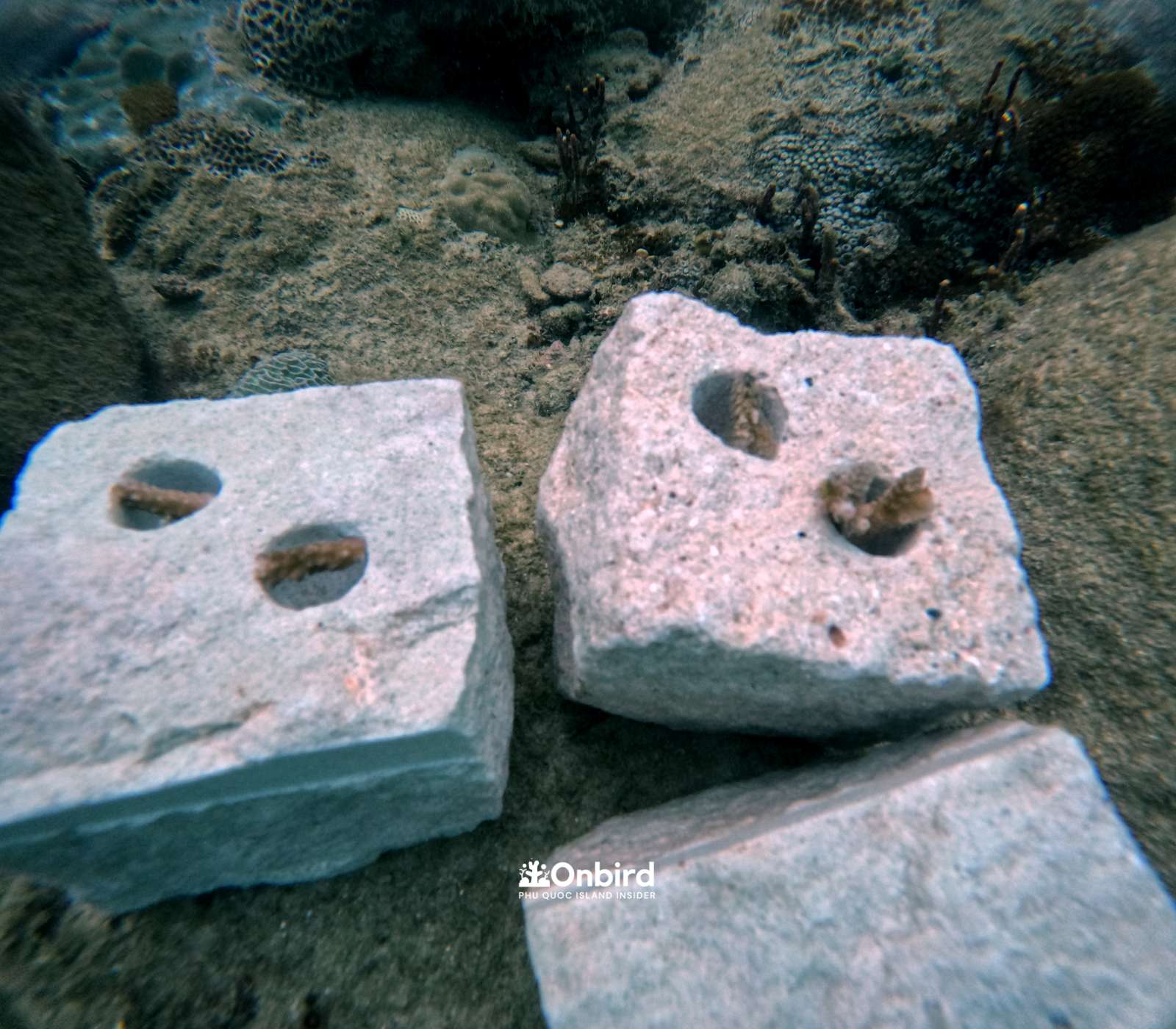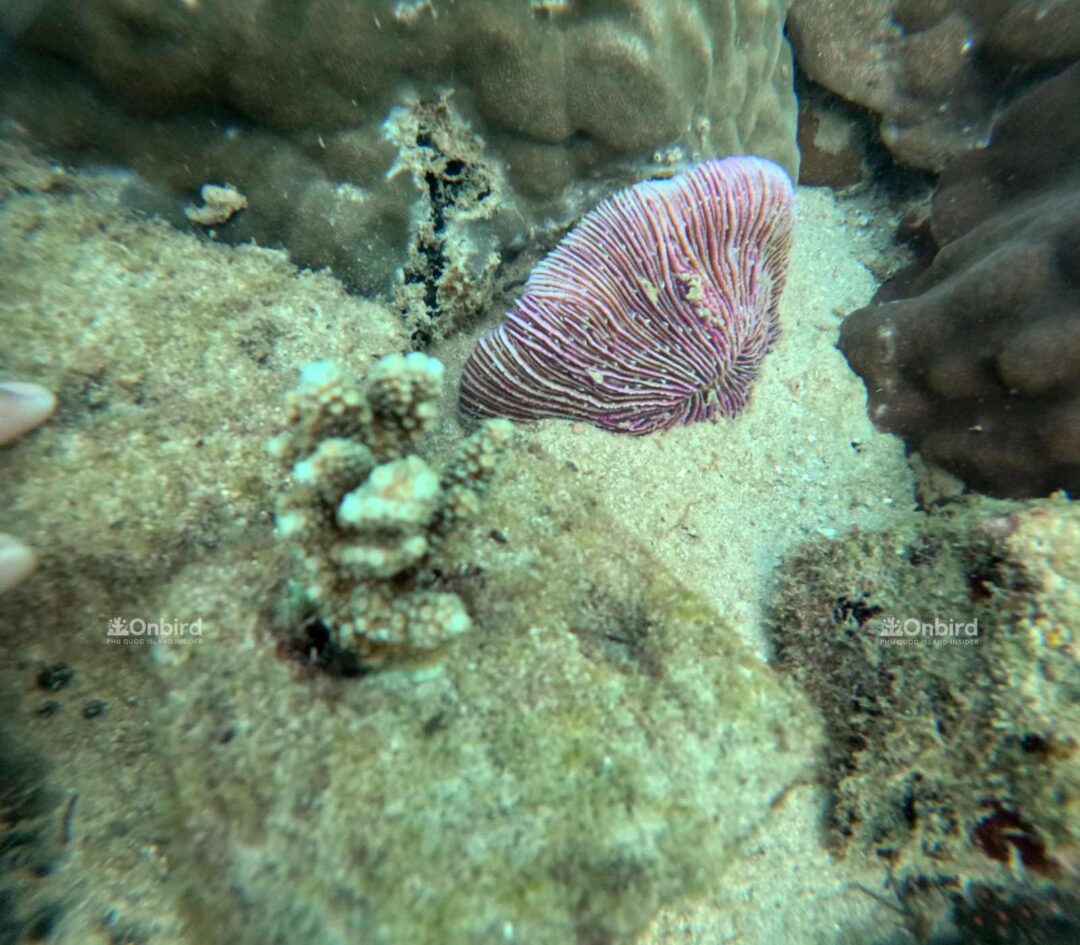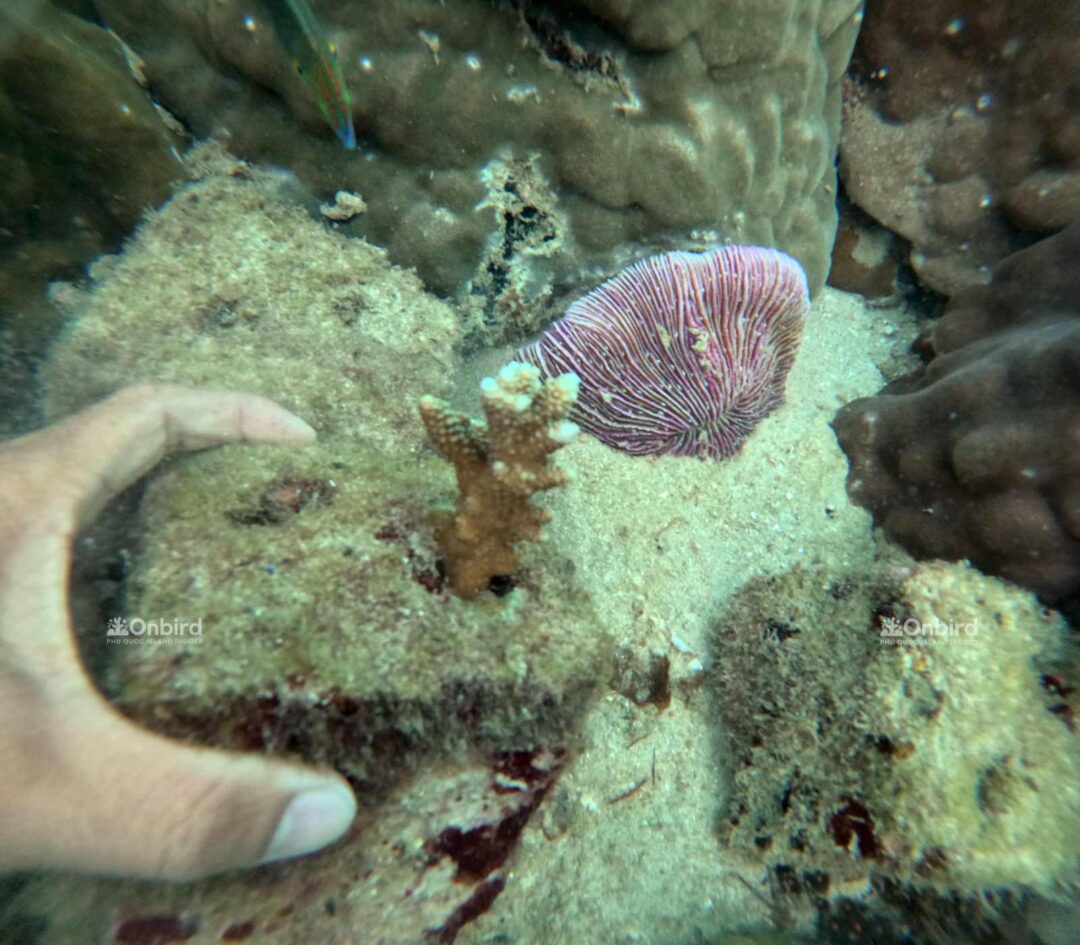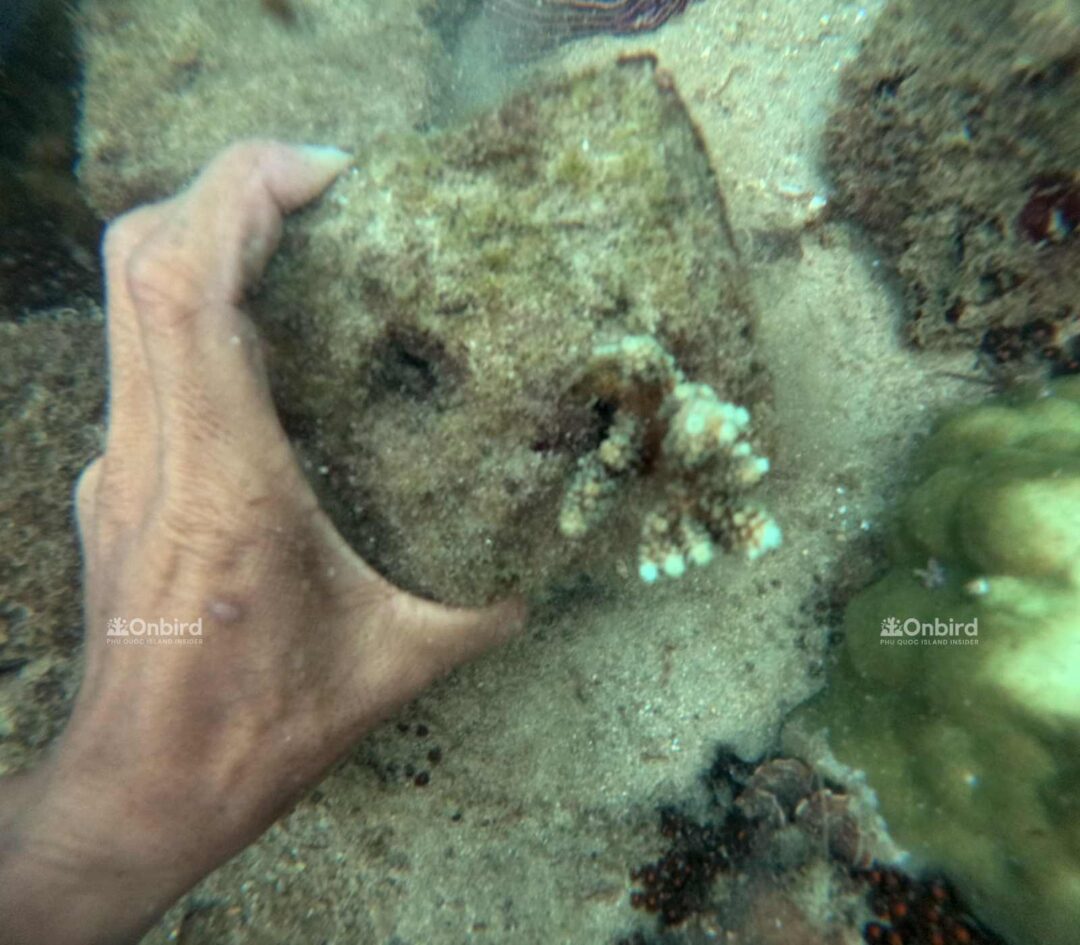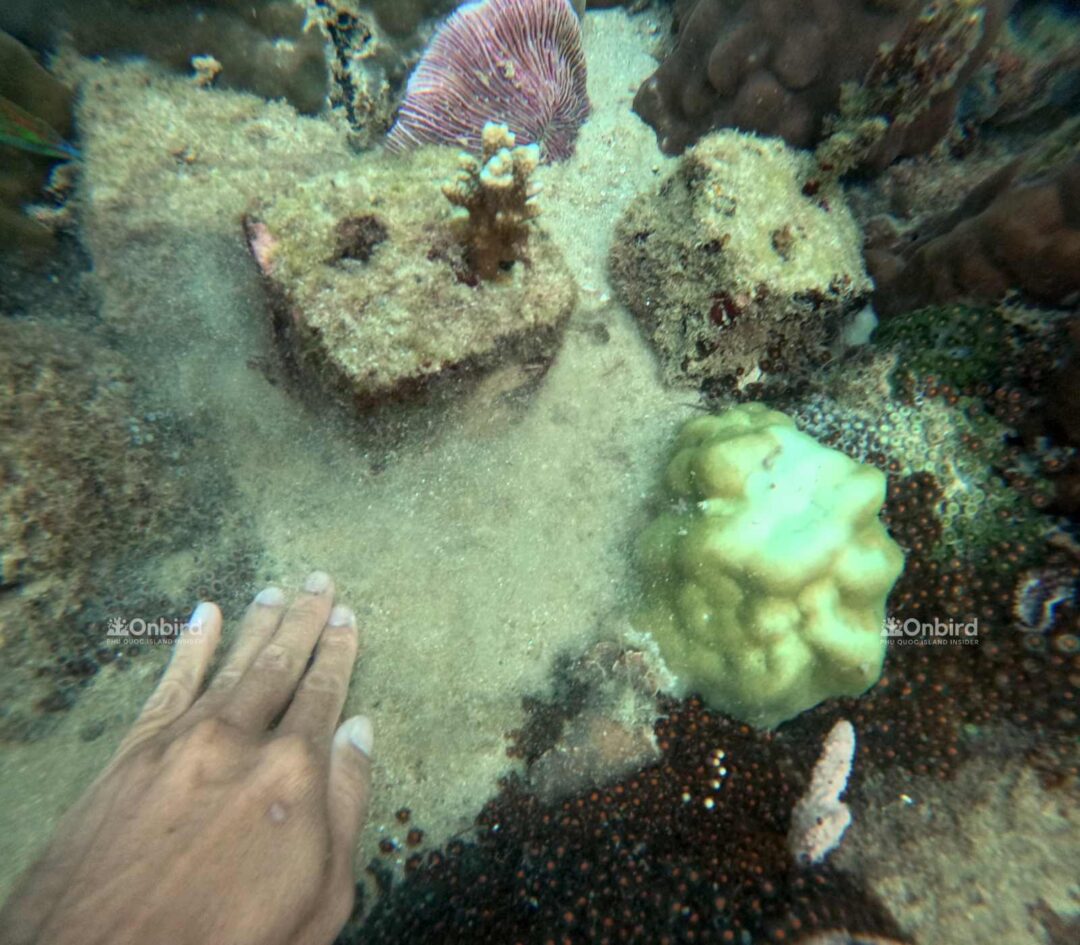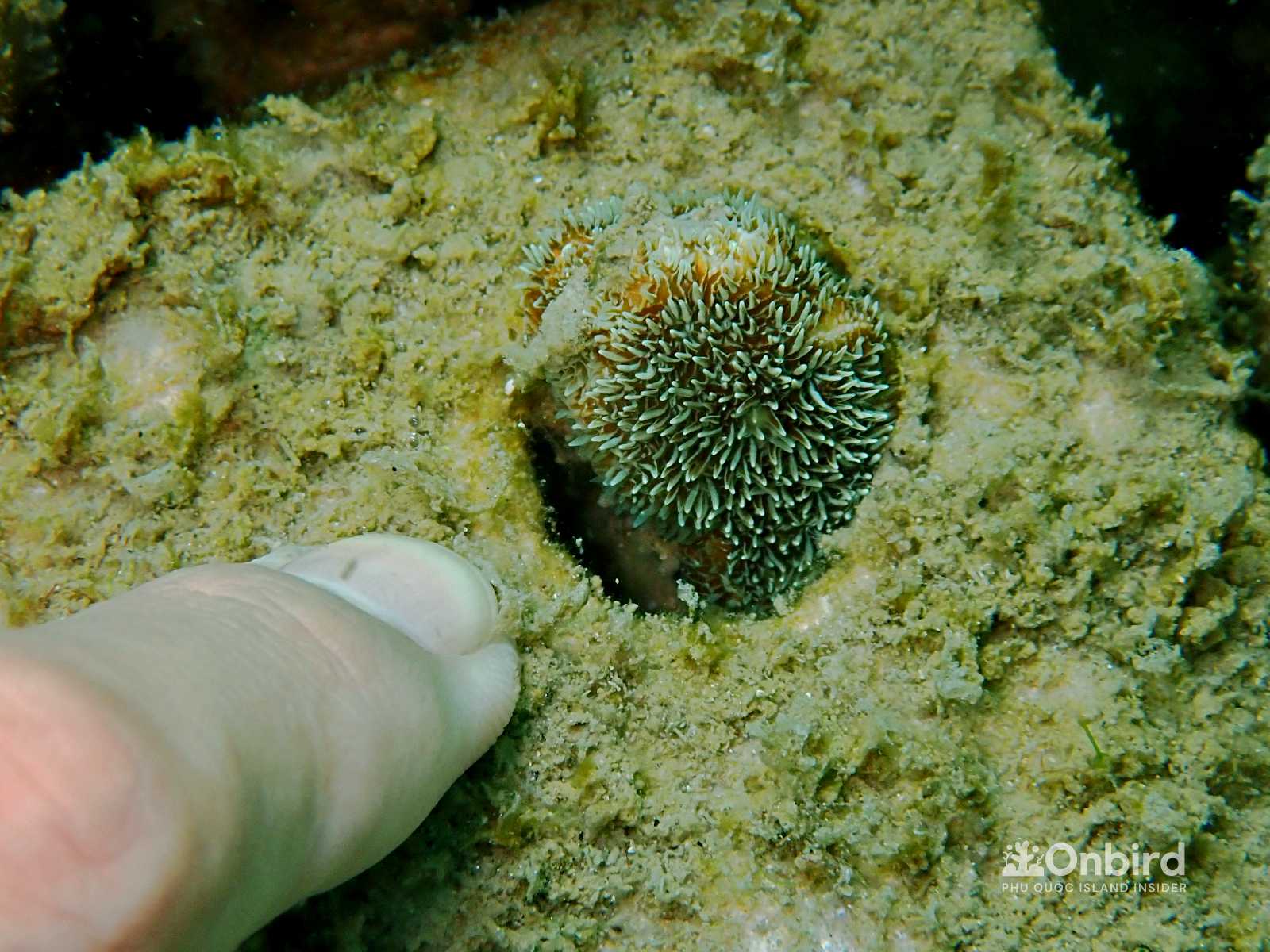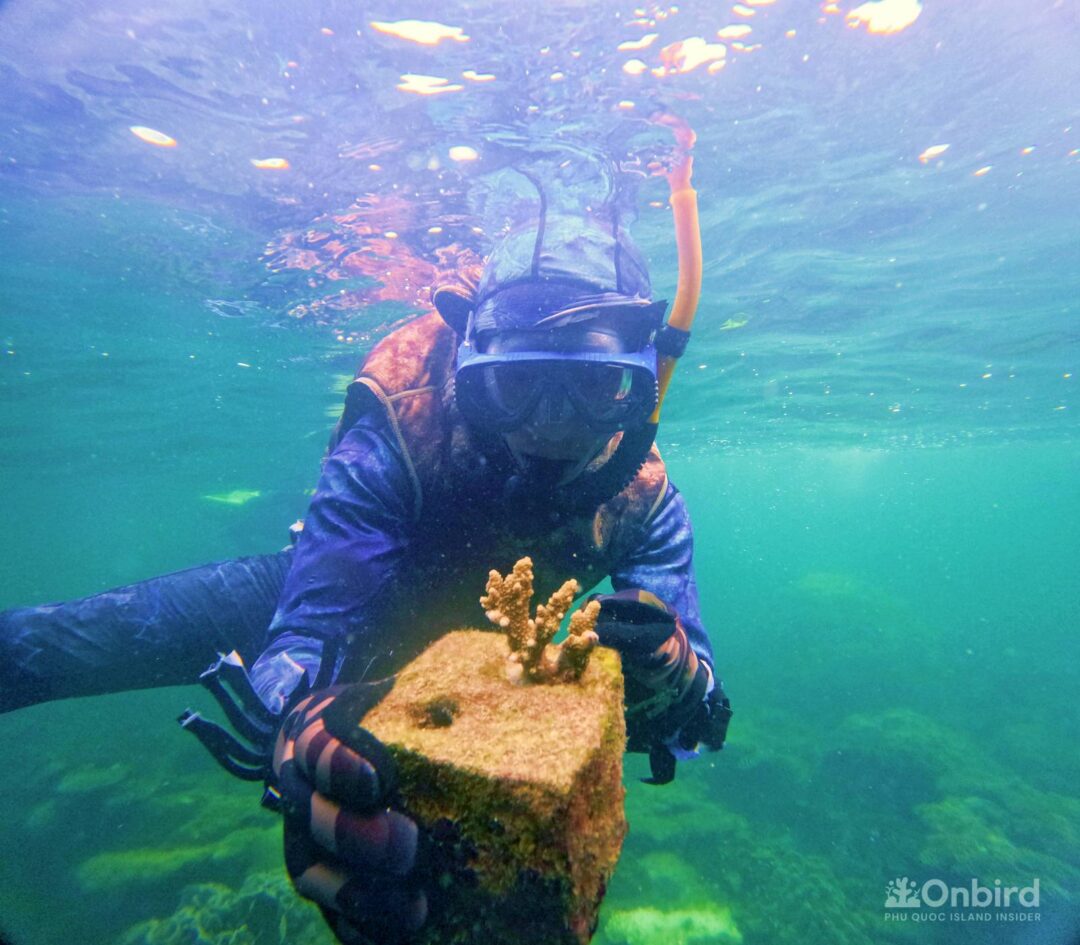MAIN CONTENTS
1. Introduction by OnBird Phu Quoc
OnBird Phu Quoc is actively engaged in a project aimed at revitalizing the deteriorated coral colonies in Phu Quoc Island. As part of this initiative, OnBird has been pioneering the development of a novel cement-based bio-rock and natural rock substrate. These bio-rocks serve as ideal substrates for coral larvae attachment and facilitate the transplantation of new coral colonies. A preliminary trial involving the placement of these bio-rocks at selective coral reefs in Phu Quoc has recently been conducted to assess their efficacy.
It is a well-established fact that numerous coral reefs in Phu Quoc remain among the healthiest coral colonies in Vietnam, surpassing those in Nha Trang, Ninh Thuan, and Con Dao, among others. Despite their previous reputation as top-ranking coral reefs in Southeast Asia, some of Phu Quoc’s coral reefs are currently under severe threat. These threats include irresponsible anchoring by local boat tours, overfishing with rake nets, chemical fishing, and the impact of rising water temperatures.
2. What is Bio-Rock?
Biorock (also seacrete) is a cement-like engineering material formed when a small electric current is passed between underwater metal electrodes placed in seawater causing dissolved minerals to accrete onto the cathode to form a thick layer of limestone. This ‘accretion process’ can be used to create building materials or to create artificial ‘electrified reefs’ for the benefit of corals and other sea life. Discovered by Wolf Hilbertz in 1976, bio-rock was protected by patents and a trademark which have now expired.
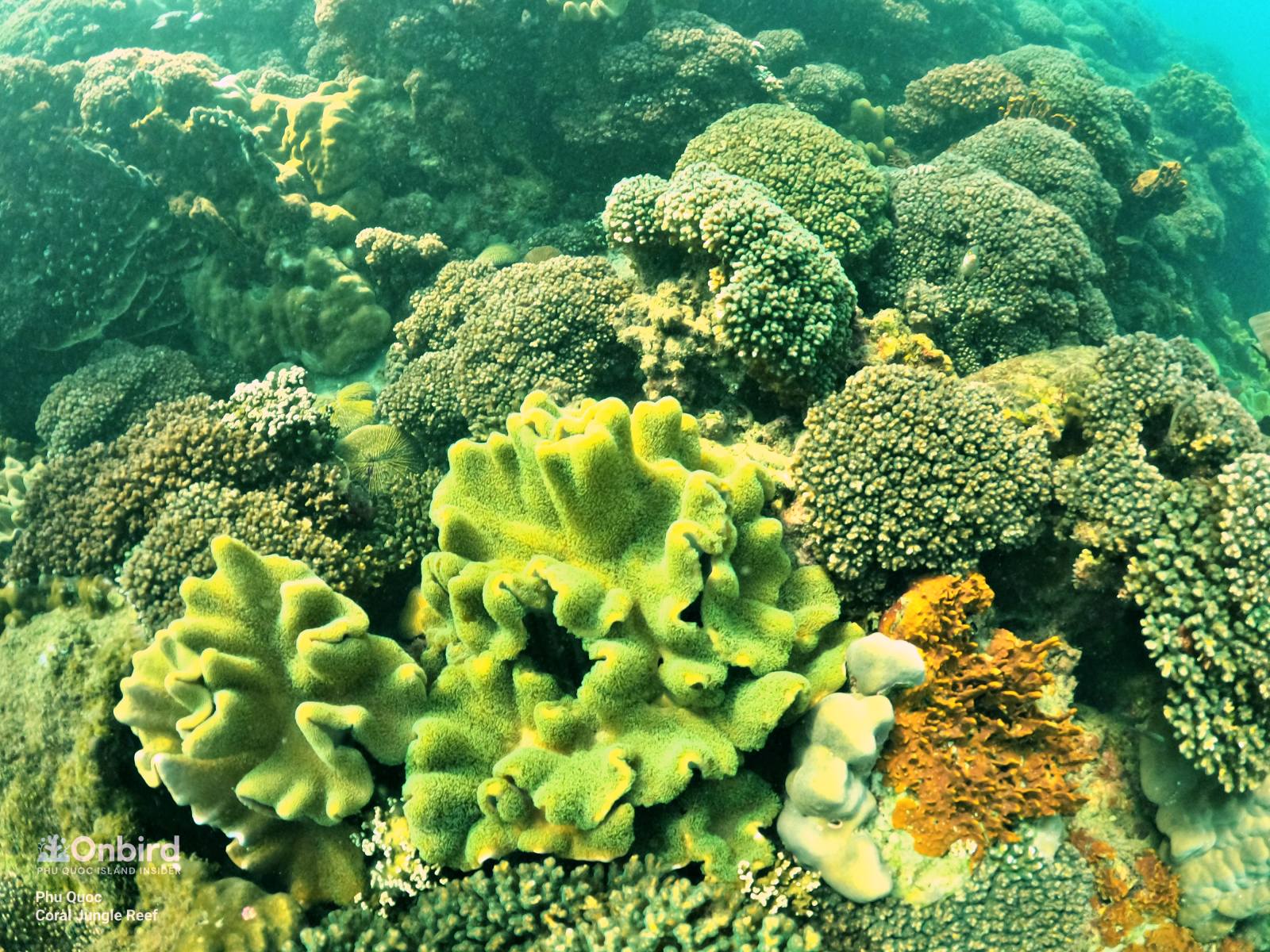
Hard corals are pivotal in reef formation as they disperse coral larvae into the water. These larvae drift with the current until they settle in a suitable location, where they develop into mature corals due to a symbiotic relationship with zooxanthellae algae. This partnership is vital as the algae supply approximately 90% of the essential nutrients required by the corals.
3. The Descriptions of the Bio-rocks Developed By OnBird.
We are in the process of creating biorocks made of cement or from natural rock, featuring strategically placed holes to secure the corals. An intricate aspect of constructing these bio-rocks involves affixing new corals onto them. Typically, divers utilize adhesive to attach fresh corals onto structures above the water, allowing time for the corals to firmly adhere before submerging them into the water.

To address the challenges encountered, we have implemented a strategy of pre-drilling small holes in the rock to secure new corals instead of relying on adhesive.
Following the initial Biorock setup, the cauliflower corals attached were displaced by fish. As a result, in September, we affixed a broken Cactus Coral to the rock. The outcome of this endeavor can be observed in the following link:
After six months, the coral has significantly expanded in size and firmly established itself on the rock, a development that brings us great satisfaction. Onbird is currently engaged in manufacturing additional bio-rock structures using natural materials, specifically cubic units measuring 10cm x 10cm, as a sustainable alternative to cement-based rocks used during previous testing.
4. The Quantity Of Bio-rocks Placed In The Coral Reefs By OnBird Team
The total number of bio-rocks placed by the OnBird team is 56 rocks (updated on 27 April 2024)
The OnBird team will lay bio-rocks on sandy or dead coral areas to establish fish-attracting habitats.
Acopora coral grows healthy after 3 month attached onto the biorock from our latest observation on August 16 2024
- Date: 18 March 2024
- Reef site: the North-east Coral Reef
- Number of bio-rocks: 6
- Depth 2.5 m
- Plant coral: Acopora Coral
- Date: 19 March 2024
- Reef site: the North-east Coral Reef
- Number of bio-rocks: 6
- Depth 2.5 m
- Plant coral:
- Date: 20 March 2024
- Reef site: the North-east Coral Reef
- Number of bio-rocks: 6
- Depth 2.5 m
- Plant coral:
- Date: 25 March 2024
- Reef site: the North-east Coral Reef
- Number of bio-rocks: 8
- Depth 2.5 m
- Plant coral:
- Date: 27 March 2024
- Reef site: the North-east Coral Reef
- Number of bio-rocks: 10
- Depth 2.5 m
- Plant coral:
- Date: 30 March 2024
- Reef site: the North-east Coral Reef
- Number of bio-rocks: 4
- Depth 2.5 m
- Plant coral:
- Date: 01 April 2024
- Reef site: the North-east Coral Reef
- Number of bio-rocks: 4
- Depth 2.5 m
- Plant coral:
- Date: 24 April 2024
- Reef site: the North-east Coral Reef
- Number of bio-rocks: 4
- Depth 2.5 m
- Plant coral:
- Date: 26 April 2024
- Reef site: the North-east Coral Reef
- Number of bio-rocks: 4
- Depth 2.5 m
- Plant coral:
- Date: 27 April 2024
- Reef site: the North-east Coral Reef
- Number of bio-rocks: 4
- Depth 2.5 m
- Plant coral:
Updated on 20 June 2024
The bio-rock setup was postponed for 1 month due to the serious coral bleaching. We placed 28 rocks on 18 June and this time we managed to complete the coral planting much more efficient thanks to new methods
- Date: 18 June 2024
- Reef site: Shallow Reef
- Number of bio-rocks: 28
- Depth 4 m
- Plant coral: 42
Update on 8 Oct 2024, many corals have been growing healthy on bio-rocks, OnBird team is delighted with this result and are officially applying it more widely and bringing it closer to tourists through the coral growing experience in Phu Quoc, please check out OnBird coral planting trip in Phu Quoc.



